ellwethe,--.
University ofPennsylvania
Summer 1987
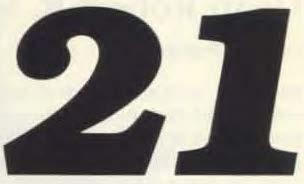

Summer 1987

r.RobertR. Marshakbecame theninthdeanof theSchoolof VeterinaryMedicineinSeptember 1973,succeedingDr. MarkW. AUam.
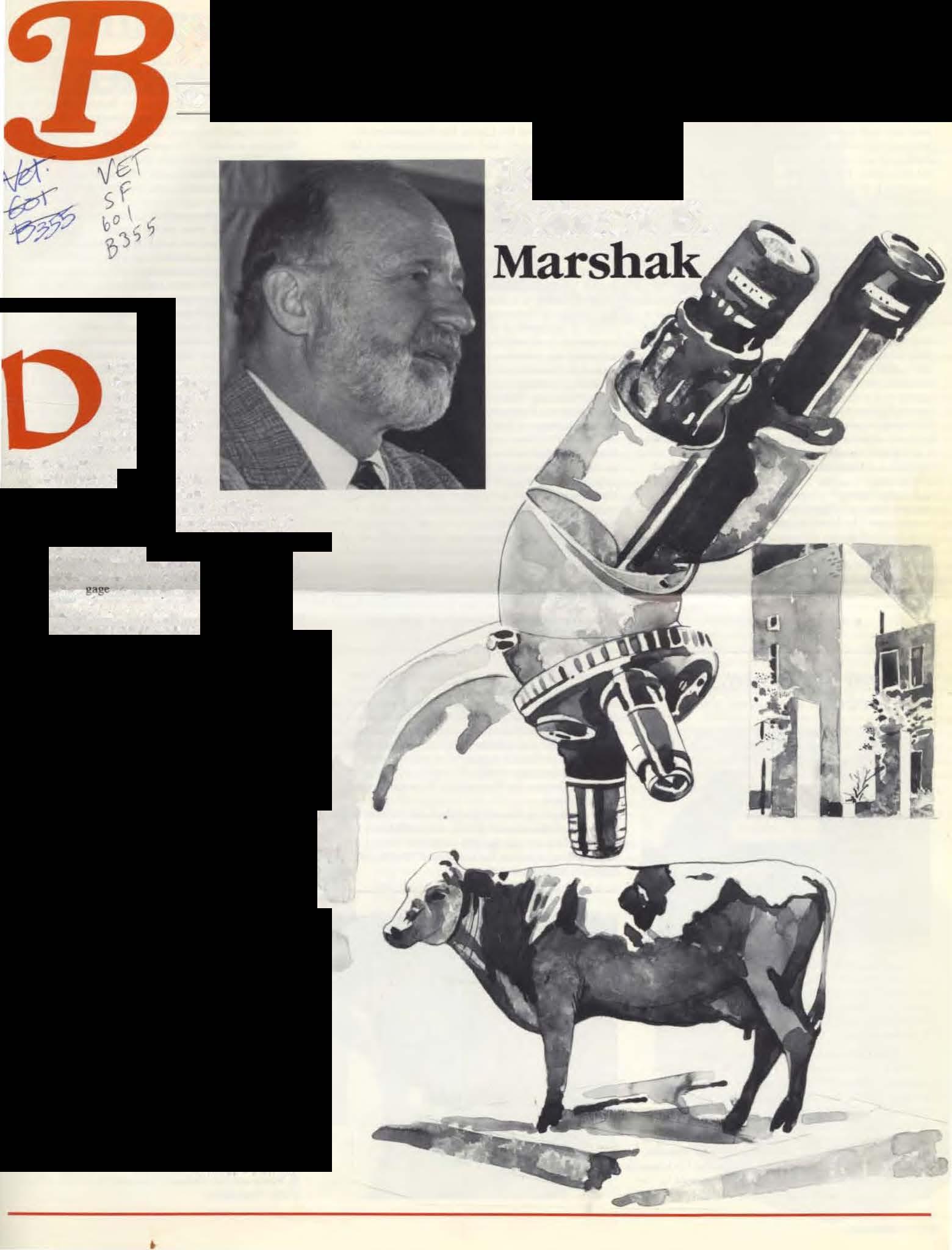
Immediatelyaftergraduationfrom theNewYorkStateCollegeofVeterinary\iedicineatCornellUniversityin 1945,Dr. Marshakbeganwhatwastobecomealargedail)cattlepracticeinSpringfield,Vermont.Oneofhisclients wru;Dr.Alan M.Butler.whowasprofessorofpediat.-lc�atl:rarvardMedicalSchoolandarenownedclinicalinvest1gatorofthatera.Dr.ButlerencouragedDr. Mar:hakto en ageinclinicalinvestigationatthe MassachusettsGeneralHospualBoston \\liththis arrangementDr.Marshakconductedstudieson metabolicdiseasesincattle,makingfrequenttripsto Bo�ton.,oftenatnight,withsamplesforlaboratory analysis.Atthesametimeheengagedinanintensive self-learningprograminbiochemistry.Dr.Marshak deveJopedfriendshipswithleadingauthoritiesintbe fieldofmetabolicdiseases.andin 1956he was organIzingchairmanforaprestigiousconferenceon CalciumandPhosphorusMetabolisminManand AuimalswithSpedalReferencetoPregnancyand Lortarionatthe�ewYorkAcademyofSciences. Theseacttviliesheightenedabasicdesireonthepart ofDr.Marshaktopursuescholarlyinterests·.Atone limeheconsideredmovingtoBostonsothathewould benearHarvardUniversity.Atthetimewhenhewas engagedinthesethoughts.Penn·sVeterinarySchool wassearchingforsomeonetoreplace Dr.JohnD. Beck,professorofmedicine,whowasleavingafter manyyearsinresidenceattheSchool.
DeanMarlWAllamhadinterviewedmanycandidatesforthepositionbutwasunabletofindtheright individual.Throughaseriesofcircumstances,Dean AllamlearnedaboutthisratherremarkableveterinarianfromVermont.AtthistimeDr.Alan Butler enteredthepictureandstrongly recommended Or. Marshak,whowasinvitedtocometoPennforan interview.AftertheinitialinterviewDeanAllamknew thatthesearchforaprofessorofmedicinehadended, andin 1956 Dr.Marshakwasappointedtothis position.
Penn'sVeterinarySchoolnowhadaprofessor withsomeextraordinaryconceptsabouthowcLinical veterinarymedicineshoulddevelop.Dr.Marshakwas keenl}concernedaboutthegreatdisparityberween theprogramsforclinicalsciencesinmedicalschools andthoseinveterinaryschools,andhelostnotimein attackingthissituationinavarietyofways. FundamentaltoDr.Marshak'sconceptsisthepremisethat studentsshouldbetaught basicprinciplesofmedicme
continuedonpage2
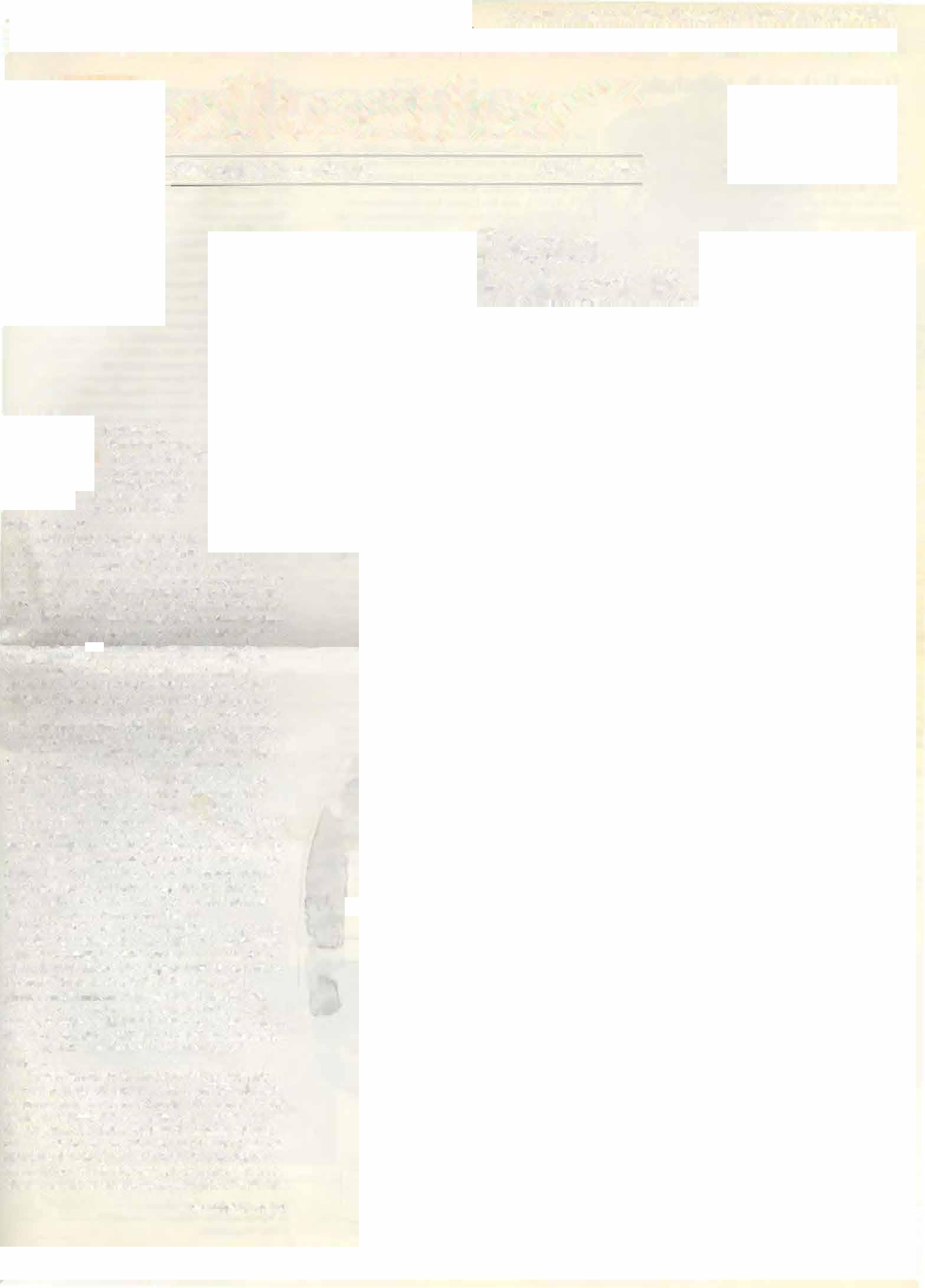
continuedfrompage1

versusthe"cookbook"styleoflearning.Forthisreasonheurgedthatthebasicsciencedepartmentsbe strengthenedandtbtswasdone.leadingtoamuch closerrelauonshipbetweenclinicala dbasicsciences. "'ext.herecruitedindividualsfortheclinicalsctence area whohadestablished scienttfic reputations, or youngpeoplewithasinceredesiretopursuegraduate studies. Manyofth�becameleadersinvariousclinicalspecialties.Dr.Marshakalsoengagedinamajor revampingofworkschedulesforcliniciansinthehospitalssothattheywouldhavetimeavailablefor research,asituationwhichneverbeforeeXJstedinthe VeterinarySchool.Thisrequiredmajoradditionsto theclinicalstaffandthistookplace.
Allofthese,andotherchanges,evemuallyforgeda clinicaldepartmentthatisoneofthe bestinthe world.Thepay-offfromDr.Marshak'sforeslgbt, determination.andhardworkwasaremarkable upgradinginclinicalteaching.research.andl.-ervicein the VeterinarySchool.Funher.therenaissanceofclinicalscienceatPennbadMimpactontheentireveterinaryprofession. UnderDr.Mar.;bak'sguidanceclinlcalspecialties.nowamaJorpartofveterinary medictne, weredevelopedatPenn,andhe is rightfully recognizedru.the"FatherofVeterinaryClinicalSpecialties...Also.underDr. MnrsbnktheVeterinary chooldevelopedanmternationalreputationasthe leaderincomparativemedicalresearch.Lastly.hewas apnmemoverinthecreauonofthecore.electivecurriculum.are\'oluuonarymovemveterinarymedical education_
Thedevelopmentofthespecialtiesrequiredthe postgraduatetrainingofnumerou�youngmenand women.andDr.Marshakprovidedtheopportunities forthoseindividualstoengageinLhisexperience. Today,manyofthosewhoundcrwemthistrainingare leadersintheirparticularfield.
Manyothermajorchangesandimprovements occurredduringDr.Marshak'sdeanship.Someof theseare:amajoradditiontotheLargeArumalHos-
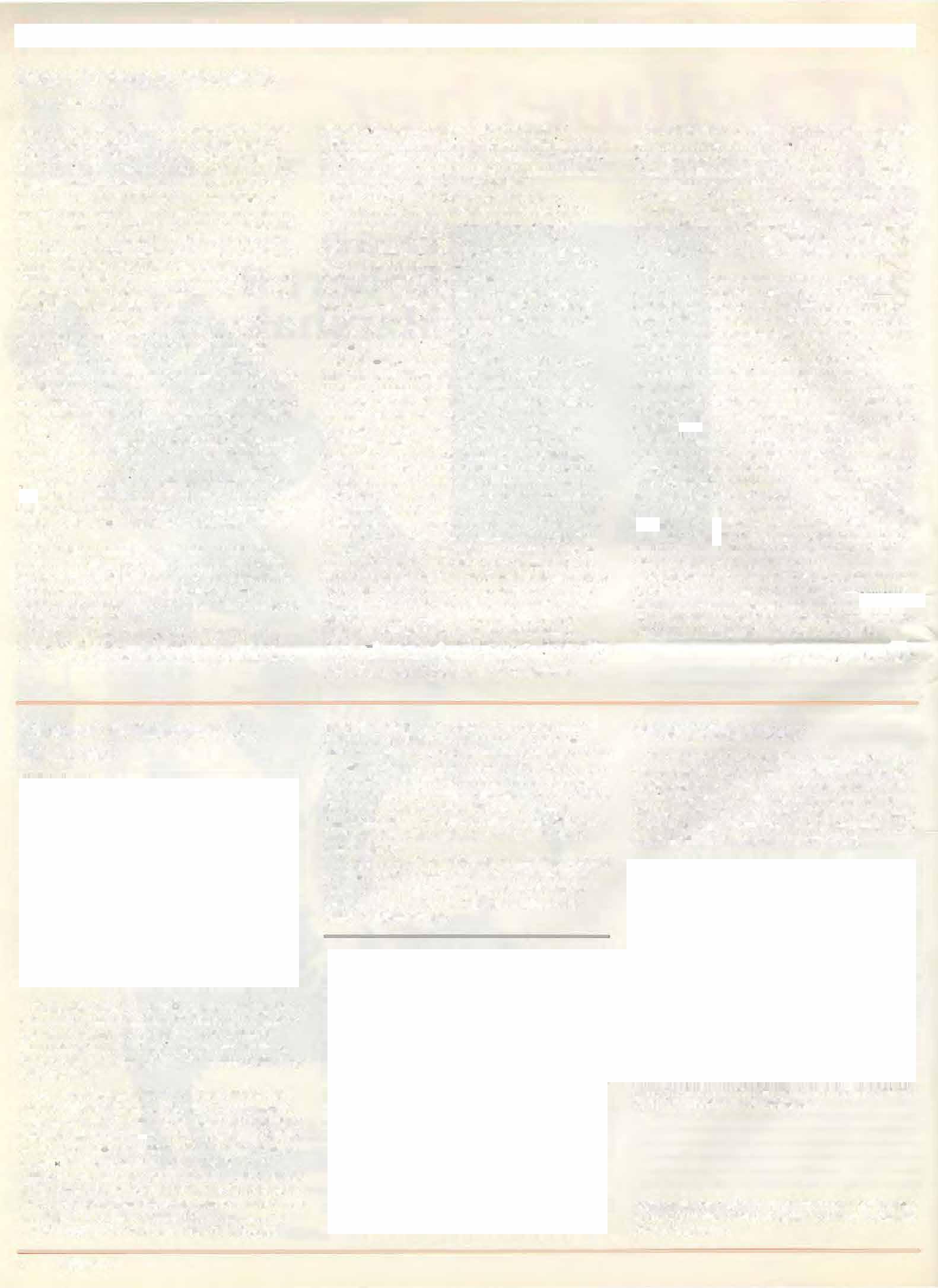
pitaJ at ewBoltonCenter.a dthecreationof VHUPonthePhiladelphiacampus:compleuonofthe CMahlonKlineCenterforOnhopedicsandRehabilitation:creationofnew.innovativeprogramssuchas aProgramofAquaticAnimalMedicine (AQUAVEn.andtheCenterforInteractionsof AnimalsandSociety;andmajorrenovationsmthe oldquadranglebuildingtoprovidemuchneeded researchspace.Duringthe}ears 1976 to 1982, Dr. Marshakdirectedfund-raisingeffomwhichrealized 27.5 milliondollarsfrornthepri'ate!>ector,andfrom 1974 untilprer.enttheappropriation fromthe CommonwealthofPennsylvaniaincreasedfrom$1.7 miLUontoover$10.7 million.Since 1983. Dr. Marshak hasdirectedamajorfund-raisingeffortknownasthe SecondCenturyFund.Todate,over30million dollarsnasbeennuscdintbiseffort.
Dr. MarshakisacharterdiplomateoftbeAmericanCoUegeof Veterinat)InternalMedicineand servedaspresidentofthisgroupfrom 1975-1976. He basservedontheeditorialboardofseveraljournals, includingtheAmericanJournalofVeterinary Research.theJoumaloftheAmericanVeterinary RadiologySociety,andtheCornellVeterinarian. From 1964 until 1967, Dr.MarshakWa!tchairman, CommitteeonPo:,tdoctoralEducationoftheAmericanAssociationof VcterinarvClmic1ans.and from 1975 until 1978 hewasamemberoftheCommitteeon VeterinaryMedicalSciencesoftheNationalAcademy ofSciences.Duringtheperiod 1976 to 1981, hewasa memberoftheCouncilonResearchoftheAmerican VeterinaryMedicalAS!>ociation. Dr.Marshakserved ontheAdvisoryCounciloftheNewYorkStateCollegeof VeterinaryMedicineatCornellUniversityfrom 1977 until 1980. Hecurrentl.yservesontheBoardof DirectorsoftheBide-a-weeHomeAssociationand thePennsylvaniaLivestockAssociation,andisa memberoftheAdvisoryCounciloftheJamesA. Bakerln·tituttforAmmalHealth.CornellUniversity andoftheSecretary'sAnimalHealthAdviSoryBoard ofthePennsylvaniaDepartmentofAgriculture.
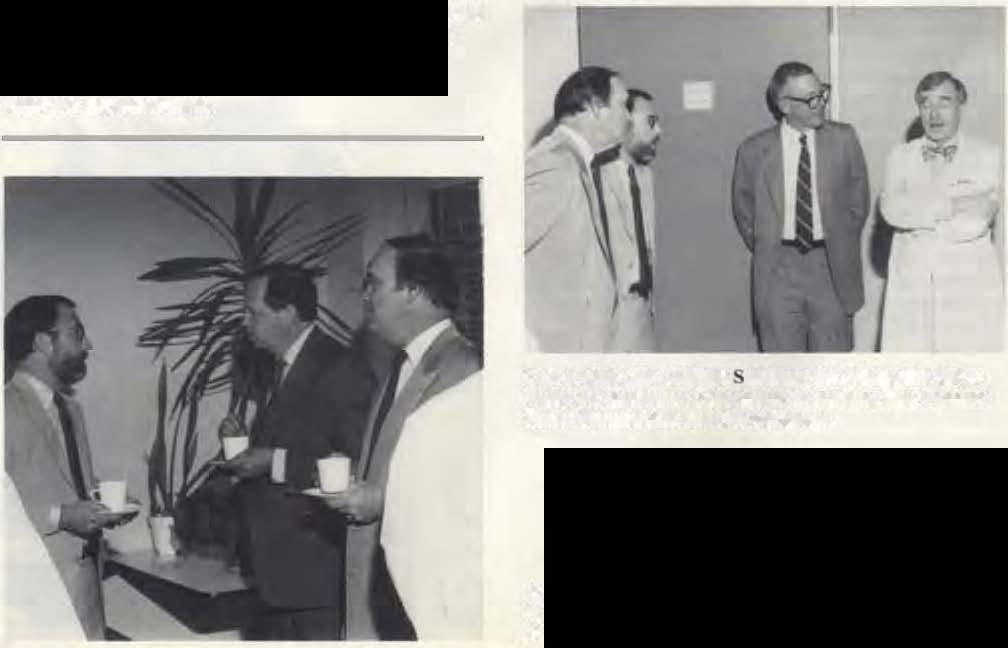

EquestrianTeam,astheowneroftopcompetition jumpers.asthefatherofdaugbten.wboareworldclasscompetitors,asanOverseerandChairmanofthe Veterinaf)oSchool'sSecondCenturyFundCampaign, a dasoneoftheSchool'smostgenerousbenefactors. Aclosefriendandadvisortotwodeans.bebashelped theSchooltochanasuccessfulcou�ethrough hazardousfinancialshoals.ThoughaloyalYalem� hisstrongtiestotheRedandtheBlueha,�ene,er beenindoubt.
Tn applaudingVincentMurphy'smagnificentrecord ofservicetotheSchoolofVeterinaryMedicine.his fellowOverseersjointheDeanandtheFacultyin invitinghimtoaccepttheCentennialMedal,the School'shighesttribute.
Dr.\lfarshakisamemberortheAmericanAssociationfortheAdvancementof cience.theAmerican AssociationforCancerRe�earch.theAmencanVeterinaryMedicalA!.soci:uion.thePennsylvaruaVeterinaryMeclicalA'!>�ociution.theAmericanA:.sociation ofVeterinaryClinician.:,, theConferenceofResearch WorkersinAnimalDiseases.andtheCoUegeofPhystetansofPhiladelphia(fellow).Heisali>oamemberof The\lewYorkFarmers.thePhiladelphiaSocietyfor PromotingAgriculture.andtheWestminsterKennel Club.
Dr.Marshakbaspublishedoverseventyscientific papers, manyofthemonthe11ubjectofbovine leukemia,butalsoonmetaboUcdiseasesandleptospirosis.Hehaspublishedfourmajorreviewarticles.
Dr. Marshak'scontributionslotheprofessionwere recognizedin 1968 whentheUniversityofBern awardedhimanhonorarydegreeofDr.med.\et.
Despitethemultifanousactivitiesinvolvedin administeringtheDeansOffice,Dr.Marshakbaskept uppermostthefundamentalmattersthatnourishthe VeterinarySchool; highacademicstandards.research. teaching.patientcare.andcommumt)servce.His resolutecharacterandhis1esthaveinspiredthe School.In$pltc:ofthegreatamountoftimewhichhe tsrequiredto:.pendinpoliticalandfund-raisingacti"tties,Dr. \ianhaJ..h�becomea majorspokesmanfor theprofession.Hehasbeensuperblyarticulate.He hasembracedanextraordtnanlybroadconstituency, mcludingthelegtl>lature,thealumru.thePennsylvania VetermaryMedicalAssociation,agnculturaJgroups. humane societtes.thedogandcatworld,LOOand wildlifegroup!!,andaquaticmedicine.
AsDr. Marshakretire�fromtheDeanshiponJuly I. 19tH. heleavesalegacythatnotonlyencompasses hismomentousprofessionalandacademiccon tions.butbrilliantlyreflectshisroleasacompassionateandunderstandinghumanbeing.Hecared!
-John1:;. l!urtm, V.M.D.ThelaboratoryintheSectionofMedicalGenetics wasrenovatedtoaccommodateane\\laboratory·in medicalgenetics.Thefundsfortherenovationwere provtdedbytheMrs.CheeverPonerFoundation. TrusteesoftheFoundationvisitedthenewlaboratory inJune.DuringthevisitDr.JohnWolfe. whowillbe directingthelaboratory,discussedhiswork.
Duringthe MayBoardofOverseersmeeting.Dean MarshakpresentedtheSchoot>sCentennialMedalto VincentB. Murphy,Jr.• memberoftheSchool's Board ofOverseersa dchamnanoftheVeterinary School'sSecondCenturyFundCampaign.Following ISthelaudation:
LinkedtoPennsylvaniabyashareddevotionto animalwelfare. Vincent8.\lfurphy,Jr..basworked selflesslytomaketheSchoolof VeterinaryMedicinea stronger,better. morereponsiveinstitution.Ahighly successfulinvestmentbankerwithextensiveoverseas respon ibilities,hemanagesmiraculouslytofind ampletimeforhislar�efamilyaswellasforahostof philanthropicinterests.Centralamongtheseinterests, bornoutofanenduringloveforhorsesandforhorsemanship,istheequineathlete.Thisisexpressedin countlessways-asPresidentoftheUnitedStates
•-...- or a numberofyears,thedairyindustry has used embryotnnsferin orderto increasethenumberofcalvesfrom Z�elect producers.Nowthistechnologyis being appliedtoproduce more high quality performance horses. Atthe Universityof Pennsylvania's Schoolof Veterinary Medicine as well as at otherinstitutions,researche� are helping ho�ebreeders toincreasethenumber ofoffspring fromsuperiormares.
Dr.Patricaa L. Sen1ch,alecturerinreproductionat Penn.�affiliatedwiththeGeorgiaandPhilip HofmannCenterforReproducuonattheVetSchool's '=e\\ BoltonCentercampus."Weare intoour fourth year of performingembryo transfer inthe horse,..she said.''Currently,morebreed associationsareacceptingembryotransferfoalsintotheirregistries.Itis permittedbythe registriesfor Arabians,Quarter Horses, AmericanSaddlebreds.Trakehners.andother Europeanwarmbloodhorses.Eachregistryhasspecificcriteriawhichmustbe metforacceptance. Embryotransfer isnotpermiuedby the ThoroughbredandStandardbredregistries."
Thehorses Dr.Sertichworkswithare performance horses.predominantlyshowjumpersanddressage horses. Manyareactivelyin trainingandcompeting onthe showcircuit,evenwhile participatinginthe transfer program.
"Weliketogroupthemaresforbreeding toincrease theefficiencyoftheprogram.Usually,webreedmore thanonemaretothestallion."Dr.Sertich said."The procedurl",., e-rvIa orintens1·eandrequires alotof aUtr iontodel...I Embryorraruferallo\\ amareto producemorethanonefoalina year. • usually,Ule J1-mootbgestationperiodohhehorse allowsforproductionofonlyonefoalperyear,andservingasa broodmareinterfereswiththemare'strainingandperformance schedule.
Dr.Sertichexplained thntthedonormare(mare whichis bred) andtherecipient mare(marewhich carriesthefoal) mustbesynchronizedsothattheyare atthesamestage intheirheatcycles."Whenthe horsesarriveattbeHofmannCenter,theyaregiven hormonestopreventthemfromcomingintoheat. These hormonesarediscontinuedaftertendaysand the mare comeintoheatsixdayslater. Eachmare is teased daily to determine herrecepti\'ity toward the stallion,andher reproductivetractis palpatedto detectovulation.Follicledevelopmentisalsomonitoredby ultrasoundsotheprecise timeofovulation can bedetermined.''Maresarebredjustpriorto ovulation.

Breeding isaccomplishedby artificialinsemination. "It isphysicallysaferforthe horses andlowers the likelhoodofspreading infection,"she said."Also, morethanone marecan bebredfrom onesemen collee;•on .,Frequently,thestallion i activelycompeting at�10 ., H�1sblOught .nto breedmgatthe:proper Lime andthenreturned tocompetition.
Sevendaysafter ovulation.the donormare's uterus is nushed. Aspecialembryomedium isinfusedand then collected. Afterflushing,the embryo, no larger than apin head, islocatedandtransferredtranscervicaJiyintotherecipientmare.The Hofmann Center is oneofthefewplaceswherenonsurgicalequine embryotransferissuccessfullybeingperformed. Throughoutthe procedureboth the donorandthe recipient maresare awakeand comfortable.
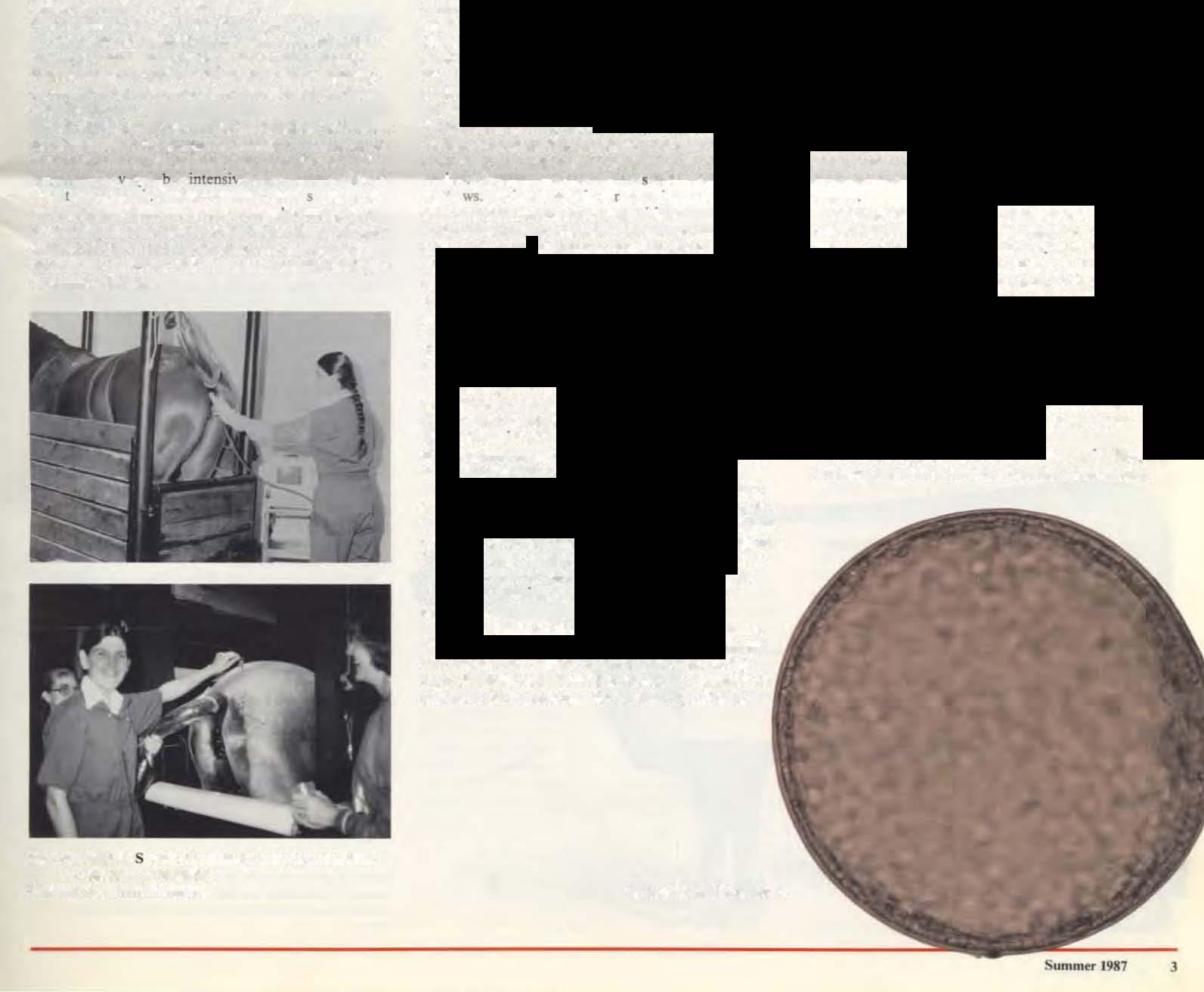
"(nsening theembryointotherecipient'suterus mustbedonecarefullysotherecipient cervixand uterus won't'recognize'thatsomething ishappening," said Dr.Sentch...Weuseaninseminationpipette, thread itinto thecervix..gently negotiatethecervix, andinserttheembryointothe uterus."
Dr.Sertich explainedthatthetiming of aflushis critical."Ifyouflushasearlyasfivedaysafterovulation,theembryo isstill intheoviduct.whereasifyou wait until aftertheninthday, theembryoissobig that itcan beeasily damaged...Aftertransfer, theequine embryotravelsall aroundtheuterus,touchingthe entireendometnumduringthe frst 16daysof pregnancy.
Theconditionoftherecipientmare isimportant. --we preferto useyoungmaresthathave notfoaled andthathaveahealthy reproductivetract. Using reproductivelysoundmaiden mares, wewereableto achievea70 percenttransfersuccess rate. lf poor
qualityrecipients areused inan embryo transferprogram.the successrate canbeexpected tobe much lower."
New Bolton Center doesnot provide the recipient mares. Thatistheresponsibilityoflhe donormare's owner, whoalso mustsatisfytherequirementsofthe breed registry.lfoneelectstohavethe procedure performed.onemustplanonthemaresstayingatleast 28daysattne HofmannCenter.Itisnot aninexpensiveproc�dureasitisverytimeconsuming. "The mares are checked andpalpateddaily.lt isvery labor intensive. But thebreedermaygetmorethanonefoal, andthedonormareisstill availableforcompetition...
Afterbeingflushed,thedonormaremaysimply returntocompetitionortraining. However, shecanbe broughttocycle againandrebredforafunherflush. Ofcourse,anotherrecipient maremust besynchronized. Inthiswayitispossible forone mareto produce two oreventhreefoalsduringasinglebreeding Z�eason
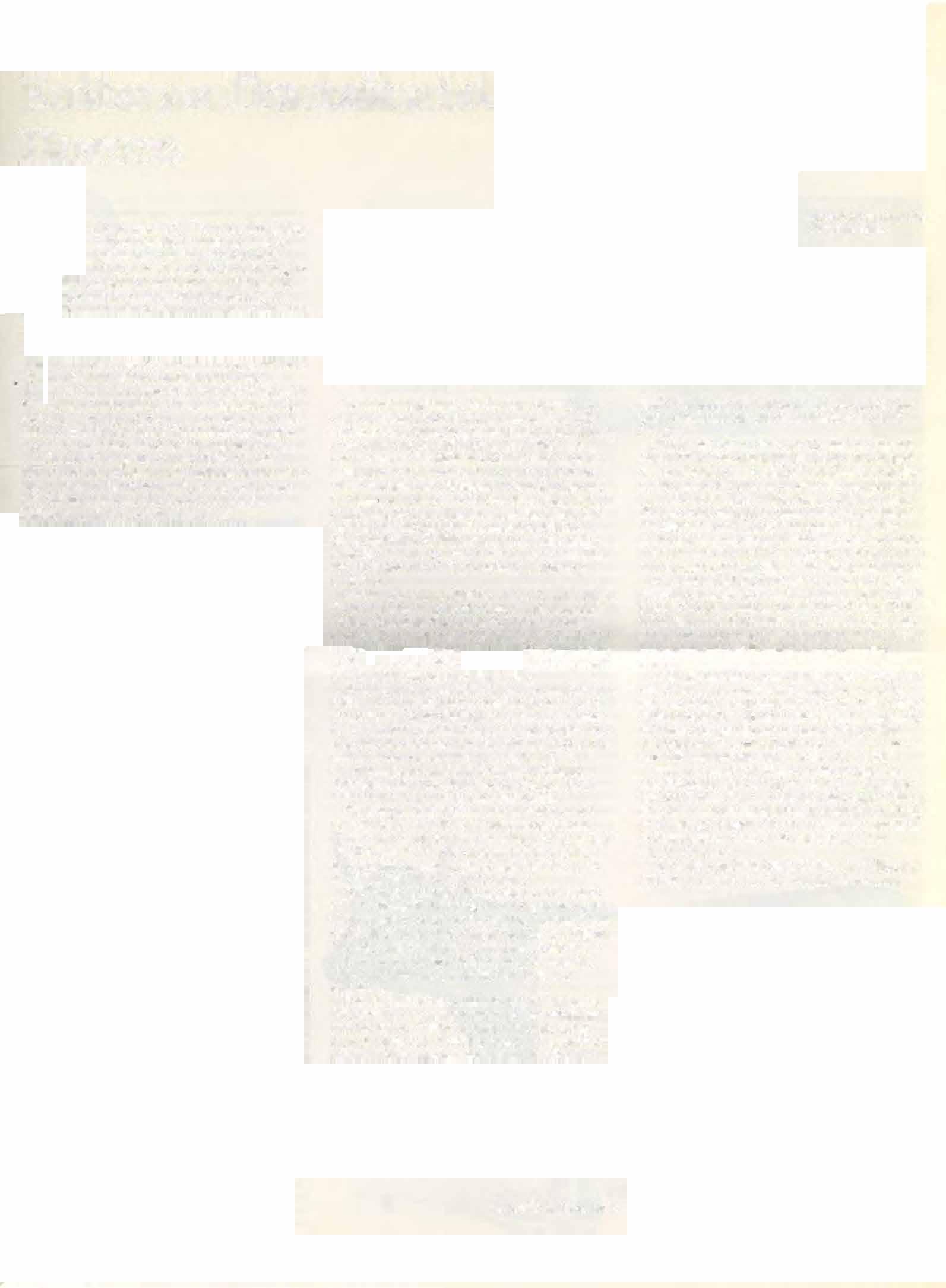
Althoughanembryocanremain viable forhoursat room temperature, recoveredembryosare usually transferredassoonaspossible.Dr Scnich hascooled embryosto4°Cfor24 hoursbeforeimplantingthem, achieving a25 percentsuccess rate. Ifthiscooling technique canbe perfected, embryoscouldbetransferredthroughoutthenationoreven theworld.
"Embryo transfer providesuswithanintensive breedingsituationinaverycontrolledenvironment," saidDr.Sertich."Weare abletocoUectagreatdeal of data,andthesestudiesprovide aninvaluableteaching andlearningsituation. Weare performing researchin aclinicalsetting.Thus,bothstudentsandhorse breedersbenefit"
Dr.Senichgraduated fromtheSchool m 1983;her primaryresearchinterestisinequinereproduction.
Top: Dr.Patricia erticbenminingamArebyultrasound fordetectionorovulation. Bottom: Asuccessfultransfer. Seven-dJ&yequineembryo. Oneofthedonormares iocom�tion.arasiticdisease of livestock is costly to theagnculture industry. It is estimated that losses resulling from nematode infections of beefand dairvcattlein the United States alone will reaCh the S600 millionmark by the end of the decade. Farmers try to prevent losses by adminil>tering anthelmintic drugs, which ure expensive, and through pasturerotation.which is labor intensive. An added problem is that some para'ite populationsareresistant to a numberofcommonlyusedanthelmintics.
Researchers, in the field and in the laboratory, have beenstudyingmeans ofcontrolling paTasiteinfections for many years. Now, with the advent ofpowerful computers. thesestudieshave taken on anadded d1meosion.Computerscan be used to develop mathematical models which can examine different means of parasite control."'We can use mathematical models of parasite population biologyto see how the diSease status of the infected livestock alters in time and�pace,..explained Dr.GarySmath, assistant professor of population biology and epidemiology at the Umversity of Pennsylvania School of Veterinary Medicine.''Such modelsalso allow us to examinedifferent strategi� for parasitecontrolbefore they are tested in the field."
Or. Stn.ilh pointedout that the modelingtechnique is thesame whether theresearcher is dealingwuh macroparasites(roundworms. tapeworms,Dukes) or microparasites(viruses, bacteria, protozoa). "Inthe caseof parasiticdiseasecaused byworms, we con::.trutt an<.-quation foreach stage in thelife cycle and simulate the course of mfecuondunng a gnwng season lorspecificclimatic conditions. Weknow thetime neededfor the development ofinfectiouslarvae, how long they can survivein the pasture, and bow long il takes the worm to reach adulthood once ingested. To study the effect of ananthelminticdrug,we can alter the equations to reflectthe drug's action onspecific stages of the parasiteand then determinethe likely reduction in worm burden."
One such study examined different protocols to combat Ostertagwostenagia(stomach worm)anfection mgrazing calves and yearlings inEurope and
temperate regio�in North America. Normally, the infectiOn peaks in August and September and declines oo its own, without drug intervention. "Traditionally farmers used to wrut until the cattle showed sagns of disease before treatingthem with anthelmintic drugs." said Dr.Smith "Such a regimen worksbut requi� repeated administrataon of the drug."Thecomputer modelsimulatedsix protocols: a) no anthelmintic therapy;b) therapeutic administration ofanthelmintic A at thetime of peak infection; c) prophylactiC admintStration of A at three, six. and nine weeks after turnout to pasture: d) movement of calves to a second pasture immediately following a prophylacticdose of anthelminticA: e) prophylactic administration of anthelmintic B three andeight weeks after turnout to pasture; and f) prophylactic admmistrarion of anthelmintLc Cviaan mtraruminal time release dev1ce (bolus), which releaseseffective quantities of the anthelminticfor 80to 100 days.
The model generated information demonstrating the impact of the variousprotocols on theworm burden in the cattle. All the prophylactic prmocals (cto f) significantly reduced the worm burden at midsummer. Dr. Smith pointed out that these protocols work by reducing the number of infectious tarvae in the pasture."The model allows u1. to studyan approach indetail without doing a fieldstudy,"he said."lt allows us to thinlcabout different approaches and examine the problemin depth prior to embarking on a field study."Themodel did not examme the costs ottreatment and the financial return realized by the use of each of the different orotocnl�
Resistance to drugsisa bigproblem in parasite control. Drug �tStance1S hJghCl>t where long-term routine dosage is practiced,"said Dr.Smith...Resistance typically appea� within ten to 50 generationsof the routine application of a drug.�It appearsthat parasites are always onestep abead ofthe drug companaes. Resistance is a vexing problem for horse owners.as seven out of ten of the small strongyles have demonstrated drug resistance. Australian sheep farmers also have tremendousdifficultieswith drugresistant sheep nematodes. which reducethe yitld of wooland meat!iignificantly. It lS important to slow down the spread of such resistant sarains, and
mathematical models can help. "We suspect that within each parasite population there may be individuals which are wholly resistant. not resistant. and panty resistant. If we assumethat the wholly resistant and thenon-resistant strainsare homozygous for the trait and that the partly reststant strain is heterozygous, we can develop a model lor each ofthese populations and can investigate when resistance is likely to appear."The model then can be usedto determinethe most efficient method of utiliLing a drug v.ithout encouraging the rapid�pread of resistant �trains.
Dr. Smith pomted out that parasite populations are regulated by a number of naturalprocesses. "For example.cattle will develop a natural immuoaty during each grazing season.and this causesa decrease1n the worm burden later in the season."Dr.Smith is incorporating these natural regulatory processes an his models sincethey influence drug strategies."The natural regulatory processesrender the host-parasite system more or les!> refractory to perturbation, and so theytendto oppose theeffectsof anlhelminnc!>.�
t·" fm..ahem !i�al modtl�.:.:�n cJucLth-. ..�...ber of field test:. and makethese more etficient.�uch models also reducethenumber of animals neededfor field !>tudies. thou&h they will not entirely eliminate theneed to use animalsin such studies...The model freesthe researcherfromtheneed to think about three or four things at once. Eachvariable and itsimpact can be examined methodically in a controlledSituation without using animals. In essence, a model can be a rehearsal for a field study with animals, making the field studymuch more efficient."
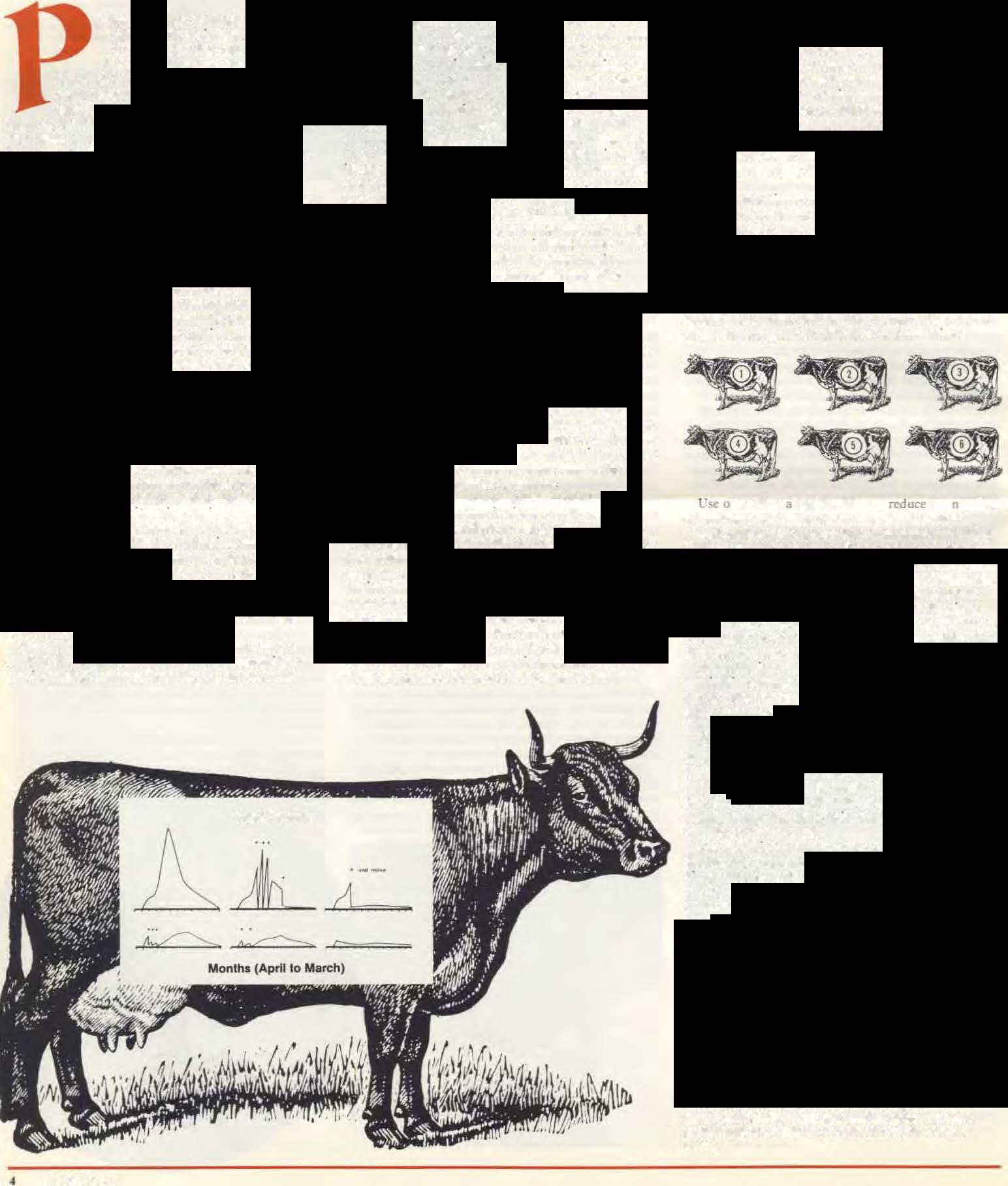
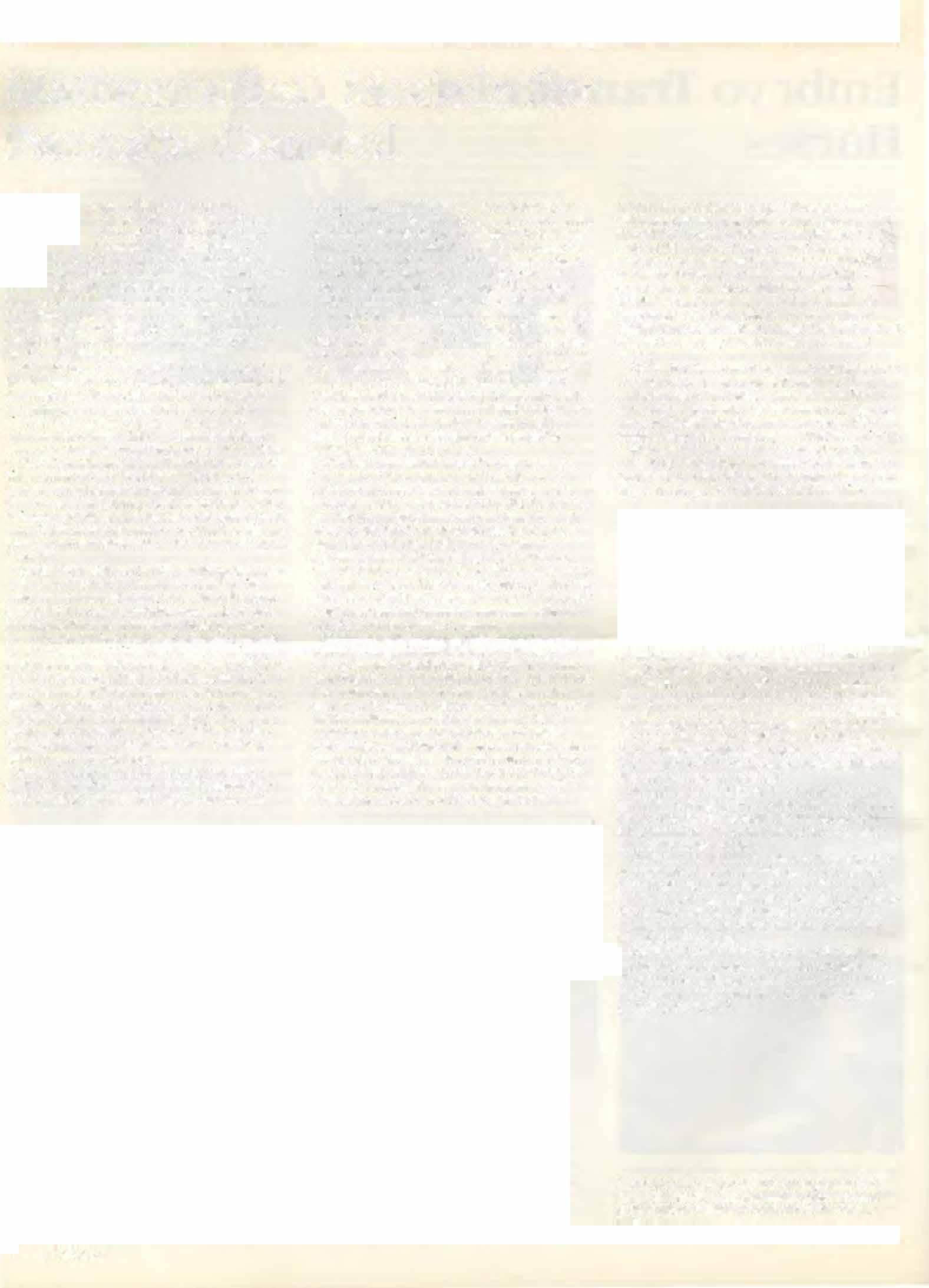
Mathematical models can abo be used to examine vaccmauon strategies prior to field testing. For example, it is possible to determine the number of vaccinated animals neededto halt the spread of an infectiousdisease such � rabies.
The economic benefitsof a given strategy can also be examinedusing models."'We hope to be able to estimate the expected return from specific protocols and so assess the specific wonh of veterinary intervention together witb therisksinvolved."Dr. Smith is collaborating with Dr. Davtd Galligan in the development ofsuch a modeL
Dr. Smith U> a member of the Centerfor Animal Health and Productivity at New BohonCenter. and has research is funded by a grant from the Pennsylvania Department of Agriculture. He came to Penn from England in 1986.
Effectsorprotocob(a)to(Qontheaveragenumberor worms(0.ostertagia)percalLTopleft10bottomright. protocol(a),notreatment,toprotocol(Q,timerelease bol�.
neofthemajorinfectiousdiseases affectinghorsesissalmonellosis. Causedbybacteria,thedisease strikessuddenly,ofteninanimals stressedbytranspon,training,racing,orsurgery."Thehorseisfineone dayandthenextdayitisfebrile, depressed,andhasdiarrhea,"saidDr.Jonathan Palmer.assistantprofessorofmedicineattheUniversityofPennsylvania SchoolofVeterinaryMedicine. ''Asthesesymptomscanindicateanumberofdifferentdiseases,theveterinarianhastousethelaboratory tomaketilediagnosis.Itisimportanttogivesupportivetherapy,toprovidefluidsandelectrolytesto replenishwhatislostthroughdiarrhea."
Dr.Palmerexplainedthatdiagnosisofsalmonellosisil;notaquickprocess."Fecalcultures are required toisolateandidentifythepresenceoftheorganism, andthattakestwotothreedaysforeachculture. Oftenthebacteriawillnotbeevidentinthefirstcultures,andmanyfecalspecimensmayhavetobe taken."WhHethespecimensarebeingprocessed,the veterinarianwillalsoperformmoreteststoruleout diseaseswithsimilarsymptoms.
Salmonellosisoccursinmammals,fish,birds,and reptiles.Morethan2,000 differentserotypeshave beenidentifiedbutonlyabout 15 to 20oftheseare responsibleforseriousdiseaseinthehorse.Dr. CharlesBenson,associateprofessorofmicrobiology atNewBoltonCenter,isworkingonthedevelopment ofbetterapproachesforboththeisolationofSalmonellaandthecharacterizationofthedifferentisolates. Heisalsoevaluatingavarietyoftechniquesto'flngerprint"theplasmid(s)presentinthesestrains.
PlasmidsareptecesofDNA hatexiStinthecytoplasmapartfromthenormalchromosomalmaterial ofthebacteriumandareoftenreferredtoasextrachromosomalelements.Plasmidsmaycontainthe geneticinformationforantibioticresistance,increased virulence(abilitytocausean infection),andanumber ofothercharacteristics.DifferentplasrnidsfromdifferentSalmonellamayhaveadifferentcombination ofthesegeneticcomponents.Theseplasmidsmay!Je extractedforanalysis.

Theattachedfigureisapictureofaplasmidanalysisperformedbyelectrophoreticseparationinan agarosegeloftheplasmidsextractedfromfivedifferent Salmonellaisolates.Twoofthesestrainshavethe sameplasmids,andthusthepatientswereconsidered tohavebeeninfectedfromthesamesource.The mechanismforanalysisoftheseplasmidsiscontinuouslybeingrefinedtogainasmuchinformationas possible.Notealsothatseveralofthestrainshad morethan onetypeofplasmidcoexistinginsidethe samebacterium.
Mostplasmidsarespreadfromonebacteriumto anotherbyconjugation.Themechanismoftransfer includesareplicationstepsothatonlyacopyofthe plasmidistransferredtotherecipient.Therecipientof theplasmidgainstheability(byvirtueofspecific genesontheplasmid)totransferacopyoftheplasmidtoanotherbacterium.lnthisfashion,asingle bacteriumcarryingoneormoreplasmidsmayinitiate amini-epidemicamongmembersofthebacterialcolony,resultinginwidespreaddistributionoftheplasmid(s)aswellassendingtheplasmid(s)tobacteria otherthanSalmonella.
"Byidentifyingthegeneticpatternofplasrnidsfrom aSalmoneTiaisolate,Dr.Bensonandhisassociates candeterminewherethebacteriamayhaveoriginated.
Dr.Benson isisolatingthebacteriafromsamplescollectedhereatthehospitalaswellasfromspecimens sent inbypractitioners,''saidDr.Palmer."Thegenetic materialcontainedintheplasmidsisexaminedand comparedtothegeneticmaterialfromotherSalmonella.Thegeneticcompositionofthechromosomesof thebacteriachangesveryslowlyovertime;changesin theplasmidcompositionareconsideredsignificant."
Recentlythistechniquehelpedtoidentifyastrainof Salmonelladetectedinahospitalpatient.Itwasa strainnotseeninthisareabutverycommonin anotherpartofthecountry.Itwasdeterminedthat thehorsebadharboredtheorganism,andthestressof sun�eryhadcausedthedisease.Thepatienthadnot picked up heinfectionatthehosp1tal.
"Theabilitytoidentifythesourceofthebacteriais imponanttoepidemiologists,"saidDr.Palmer."Outbreaksofsalmonellosishaveincreasedinrecent years, anditisimportanttofmdoutwheretheorganism camefrom."Dr.Benson'smethodcanhelpdetermine whetherthebacteriaoriginatedfromaherdofcattle, fromacontaminatedareaofaslaughterhouse,processingplant.orstoreorwhethertheyfoundtheirway intofoodthroughcontaminatedappliancesina kitchen...Atthispointintime,agreatdealofblame forhumansalmonellosisoutbreaksisputonlivestock producers,"saidDr.Palmer."Byidentifyingthestrain ofbacteriatherealsourcecanbefound.Itmaynotbe onthefarmorinthefeedlotbutinaplaceremoved fromthere."'
Abouttenpercentofhorseshaveasymptomatic Salmonellainfections Theyshownosignofdisease, yettheycanactasareservoirastheyshedthebacteria fromtimetotime.Thediseaseisspreadmainly throughfeces.lnhorsesolderthanoneyearitcauses diarrhea.fever,anddepression.Infoalsandnewborns.itmaybecomesystemicinthatthebacteria invadethebloodstream,causingpneumoniaandinfectioninthejoints.Herethediseaseistreatedwithantibioticsinadditiontotheflutds."lnolderhorsesantibioticsmayslowdownthediseasebutwon'tcureit," said Dr.Palmer."Aggressive,supportivefludtherapy atthistimeisthebesttreatment.Thediarrheawillrun itscourse.andthehorsewilldevelopimmunitywhich mayprotectitfromfutureinfections.Rarelydowe getareadmissionforsalmonellosis."
Salmonellosisalsoaffectslivestock.Itisparticularly seriousfornewborncalveswherethemortalityrateis veryhigh."Cleanlinesscanreducetheincidenceofthe disease�suspectedanimalsshouldbeisolatedandcon-
taminatedpasturesshouldnotbeused."Salmonella infectionindairycowscanpresentahumanhealth hazardifthemilkisnotpasteurizedpriortoprocessingorsale.Heatkillsthebacteria.
Salmonellosisisalwayssuspectedwhenahorseora foodanimalisadmittedtothehospitalwithdiarrhea. SuchpatientsareplacedintheisolationunitatNew BoltonCenterandaretestedrepeatedlyforthedisease.Onlywhenatleastfivecleancultureshavebeen obtainedissalmonellosisruledout.Eachanimalisin itsownstall,andveterinariansandtechnicianswear overallsandboots,whicharechangedbeforeentering thenextstallorleavingthebuilding.Also,beforea patientishandled,theclinicianandthetechnician scrubtheirbands.Whenapatientisdischargedthe stalliscleanedanddisinfectedandculturesaretaken. Onlyaftersuccessivecleanculturesisthestallusedfor thenextpatienL
TheSalmoneflaorganismmaybeanywhere,inthe groundorinwater.Instablesandonpasturesitcan beshedbyrodents.birds,andwildlife.Thus,horses andlivestockarefrequentlyexposedtoit."'Salmonella usuallywillnotaffectahealthyanimal,butwhensuch animalisstressed,theinfectioncantakehold,"said Dr.Palmer."Veterinarianscarefullymonitortheir surgicalpatientsforsalmonellosistobegintreatment atonceshouldthediseasesurface."Atthistime.there isnocompletelyeffectivevaccine.Dr.Bensonandhis colleaguesatNewBoltonCenterareworkingon developingone,asareresearchersatother institutions.
Whilesuspectedsalmonellosiscasesmakeupthe largestcontingentofpatientsintheisolationunitat NewBolton Center,horsesandlivestockwithother infectiousdiseasesarealsoadmittedthere...Animals withdiseasessuchasherpesmyelitisorPotomac HorseFeverareplacedinisolatio.n.asarecattlewith Johne'sdiseaseandsheepandgoatswithcaseous lymphadenitis,•· saidDr.Palmer."Otherinfectious diseaseslikestranglesorequineinfluenzacanbe treatedonthefarmwhereLheanimalscanbekept isolated."
TheisolationbamatNewBoltonCenterbasbeen renovatedandrefurbishedduringthelastyear. Shortly,eachofthesixstallswillbeindividuallyventilatedandheatedinthewinter.Theventilationsystem willbesuchthatonlyfreshairwillbecirculated.The renovationsandthenewairhandlingsystemwere madepossiblebyagenerousdonationfromtheMrs. CheeverPorterFoundation.
PlasmidProfilesofSalmonella(ClinicaJIsolates)Dr.CohnHarvey.professorof�urgery.discussed dentalandgumproblemsincats. Heexplainedthat cat� ha'cJOteeth,comparedtodogswhichhave42. Thl:skull and mandibleofthecatarcgenerally shorteraml the beadshapeismoreuniformthanin dogs.

Theeat'supperjawhaseightteethoneachside, andthelowerjawhassevenoneachside.Themctsor teetheachhaveasingleroot;thecanineteetheach haveonelargeroot.thevisiblecrownbeingonlyone thirdofthetooth.Thelargecarnassialtoothonthe up('lcrJaWhasthreerootsandtheothercheekteeth eachhavetworoots.Inanormalhealthymouththe teetharecleanandthegumsarelightcreamorpink incolor.
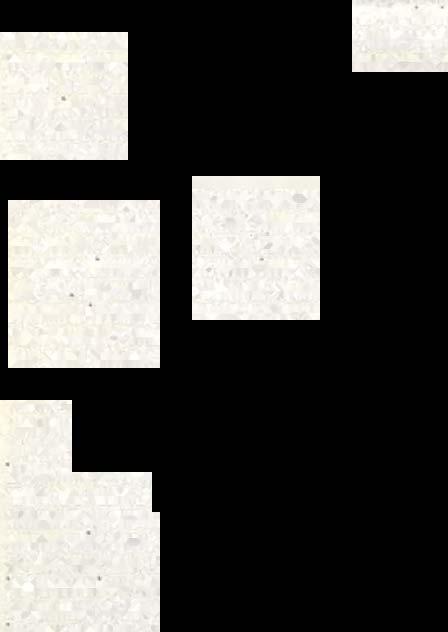
Often though,thenormalhealthymouthisseen onlyinyoungercats.Astheanimalgetsolder.gum anddentaldiseasedevelop."Gumdiseasl:isthemost frequentdtseascseeninvetennarydentalpractice," s:ud Dr Harvey."Periodontaldiseasei.sthemost commonmfectiousdiseaseintheworldanditaffects dog:.,people.andallotherspec1es."Hepointedout thatgumdiseaseisusuallyregardedasabenigndisea:.cuotcausinga great dealofpain.exceptinthecat whereitseffec�canbecomeaveryseriousmedical problem.
Periodontaldiseaseiscaused bybacteriathatflourIShinthemouthandformplaque,asubstancewhich coatstheteeth. Ifitisnotremovedthroughdietary abrasionorbrushing..calculus,ahardmineralsubstance,wtUform.Itadherestotheteeth.particularly atthegumline.Thisirritatesthetissue,causing mflammauon.Bacteriaexacerbatethesituation.lnthe beginningofthediseaseprocess,thebacteriaOourishmgareaerobic,butafterashortwhileanaerobicba<r terintakeover.Thesearemoredestructiveasthey producee111ymeswhichattackthegumandbone tissues. Ifinfectiongoesunchecked,thegingivaecan becomesoin1lamedtbattheypullawayfromthe teeth,andbacteriacanpenetrateintothepocketsand reach the bone and affectit.Thediseasealsoattacks tileligamentsthatholdtheteethinplaceandthatact �!>hockabsorberswhenonebitesdown.Inadvanced dbe�e,teethwillloosenandfallout.
Periodontaldiseaseinthecathasanaddeddimension. ot onlyaregumsandbonetissuesaffectedbut alsotheteeth.TheactualstrUctureoftheteethis attackedbytheeat'sowncellsthatlinetheteeth. Activelesions('necklesions)developandthecementumdisappears,leavingtbesensitiVedentinexposed. Itisaverypainfulcondiuon.astiletoothnervesare m> longerprotected.\Vnena\;athoi!>necklcs1ons1t mayrefusetoeatordrinkbecauseofthepain. Left untreated,theconditioncanbecomelifethreatening becauseofdehydration.
Anotherabnormalfeatureofperiodontaldiseasein catsisextensivesoft-tissueproliferationandulceration,whichdevelopsinsomeanimals. Itusually affectsthecheekliningthatseparatesthejaws,and theliningofthethroat.Thisconditionhasbeen referred toas..plasmacytic-lymphocytic gingivitis-stomatitis."
mayhavetobepulled."'Heexplainedthattheteeth mostoftenaffected arethoseinthecheeks."Wecan pull themandleavethe canineandincisorteeth.The catcaneatand willbefine.''Therateofcureforcats withsevere.non-responsivegumdiseaseisabout70 percent,followingextractionofallteethinaffected areasofthemouth.
Dr.Hotnc)thenexpla.nedproperoralh)a'eneto prt\entgumanddentaldisease10cat.s. Herecommendedfeedingadryfoodandbrushmgaeat'steeth severalumesaweek.Oneneedsasoftchild'stoothbrush.adentifricespecificall}forcats.andpatienceto brushaeat'steeth.Substancescontainmgsodium benzoateshouldnotbeusedasthatIStoxictocats. Toacquainttheanimalwithhavingitsteethbrushed, theownershouldgentlyholdtheeat'smouthclosed and thenjust lightly brushtheoutsideofthefront teethWith abrushdippedinwater. Afterabout a weekthebrusllingshould beextertdedtotileback teeth.sullonlyontheoutside.Afterafewweeksthe eat's)8\\ shouldbeopenedandthemsideoftheteeth brushed. HecautiOnedthatsomecatswillnotallow brushingonLheinsideoftheteeth.andherecommended �ocontinuebrushingtheoutside.
Priortoembarkingonabrusbmgreg.mcn.the ownershould makesurethattheteethandgumsare clean Lftheyarenot,thenthecatshould betakento theveterinarianforteethcleaning.lhenbrushing should becommenced.
Dr. HarveyLhenbrieflydiscussed()rtbodontic abnormahtieswllichcancausemaloccluSJon.These areseencommonlyamongbrachycephalicbreedsand occastonaiJytnsomemodernMrainsofSiamesecats whichba\leextremelylongjaws.
Dr. Harveyexplainedthatdentalandgumdisease incatscanbesuccessfullytreatedifdetectedearly. "The animal isanesthetized,andtheteetharecleaned thoroughlytoremoveplaqueandcalculus.Thenthe ownerhastofollowupwithhomecaretopreventt:he reformationofplaqueandcalculus. lfthediseaseis advanced.weneedtotreattheanimalwithannoiotics andanti-inflammatorydrugstoreducetheinOammauon.Onlythencantheteethbethoroughlycleaned whiletheanimalisanesthetized. Inseverecases,teeth
Traumaisacommoncauseoforaldisease.Cats oftenfracturethejawwhenfallingfromheights,or theymaydislocatethejaw.Fracturedteethcanbe retainedifendodontictreatmenti!,performed.Chewingonelectricalcordsalsoresultsininjuryofthe mouth.
Dr.HarveycurrentlyisengagedinaresearchprojectstudyingthetypesofvirusfoundmornJcavitiesof cats. Hisworkisbe.ingsupponedbya grantfromthe WinnFoundation,anditiscarriedoutatPennandat theUniversityofLiverpool1England.

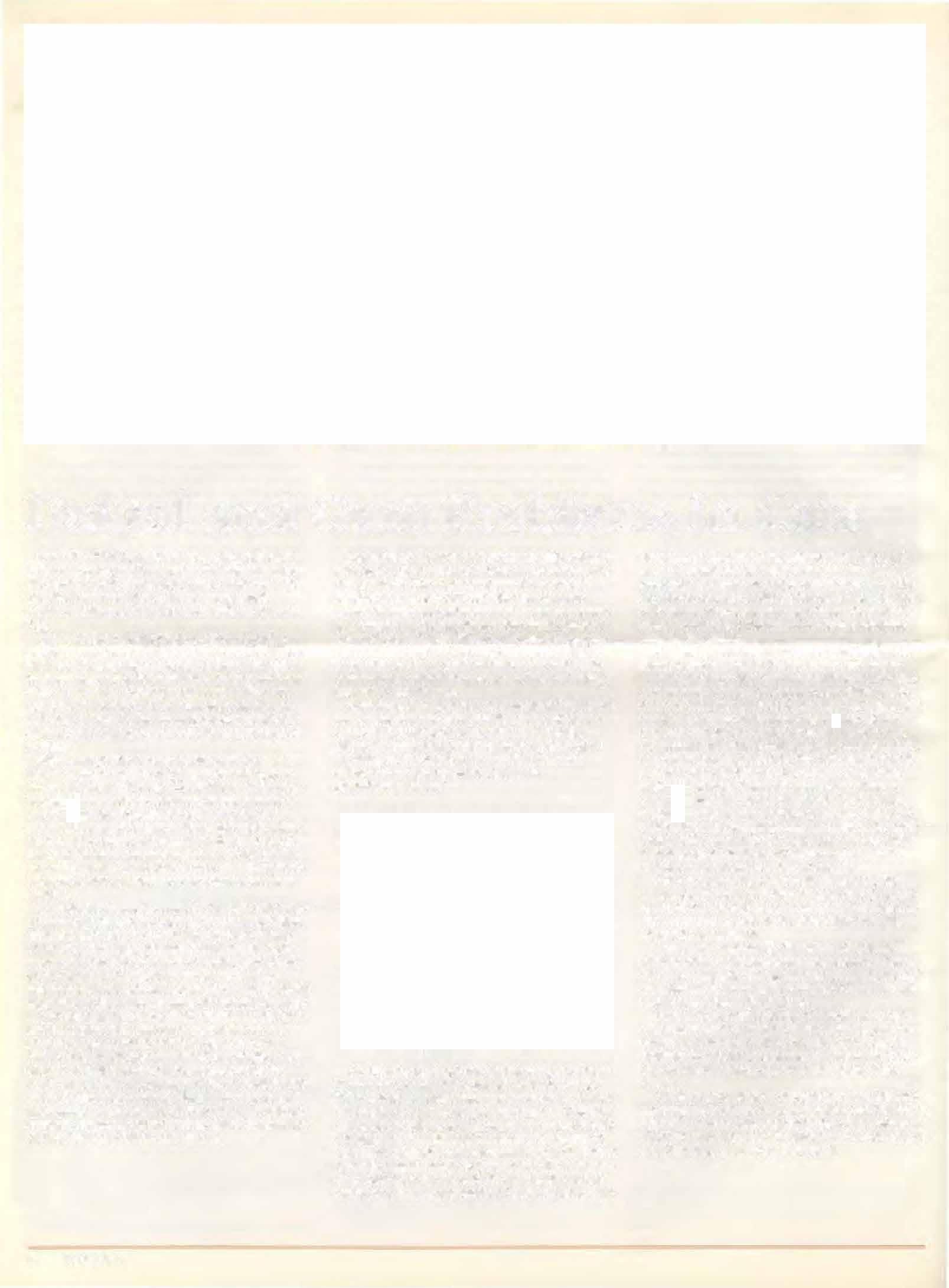
Dr V1ctoriaL.Voith,adjunctassistantprofessorof medicine.discussedfelinebehmior.Shepointedout thatcatscanbeVtl)�cia!andhaveindividualways of�:xpressingthemselves.SometimestheircommunicationsmaybeInterpretedasaggressionbyowners. Shestatedthatcatshaveanexiblesocialsystem.that theycanliveeitheraloneorinsmallgroups,andthat the)communicatebyhissing,growling,swatung.and !.Cratching.�These'1gnalsarenotevil;theyaremeans tocommunicate.�shesa1d ..ButO\\nerssometimes mtsinterpretthem.(atshissateachotherandsomelimesatowner�.Wemustrememberthattheyoften usegrossersignalsthandogs.''
About25percentofthecatbehaviorcallsreceived b}theclinicpertaintoaggression.'"'Inmanycasesitis ju:otpia�aggressionandthiscanbetreatedeasily. However,webaveseencasesofsevereaggression
allybewastoplacethefoodcloserandclosertohimelfuntiltbecatwasnexttobim.Onlythenwasheto attempttopetit.htooktwomonthsforthecatto loseitsfearandceasetheaggressionepisodes.
Othercasesofaggressioninvolvedacatwhichhad attackedadogandthenhadturnedontheowner.In anothercasethecathadbecomearousedbyapeculiar odorandbecameaggressivewhentheownerreached forthecattopetit.
"Catstakeoffensewhenscaredoraroused."said Dr.Voith."'Theyremasnarousedforalongtuneand maydirecttheiraggressiontowardsomeonewho comesclosewhiletheyareintb.isstate."Sherecommendedtonotinteractwithacatthatisarousedand towaituntilthecat�calmandrelaxed.exhibiting otherbehaviorslikegroomingoreating...Ifone approachesacatthatisinanarousedstate,tberesult

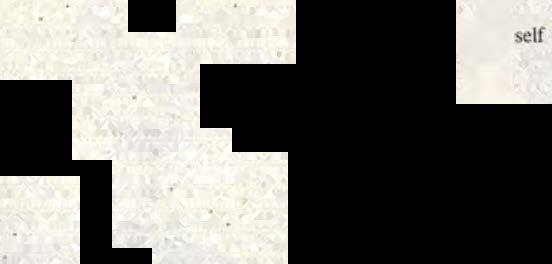
Shepointedoutthatifcatsdonotscratchinalitterboxtheymayeventuallystopusingit. IftheydiSlikethelittertheywiJIfindanothersubstrate.Inorder todiscouragethecatfromusingthecarpetoranother surfaceinthehouse.theownershouldcleanthearea andthenchangethetextureofthesurface.Itcanbe coveredwithplastic.forexamole.
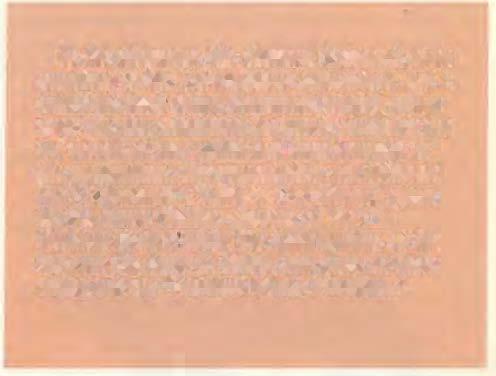
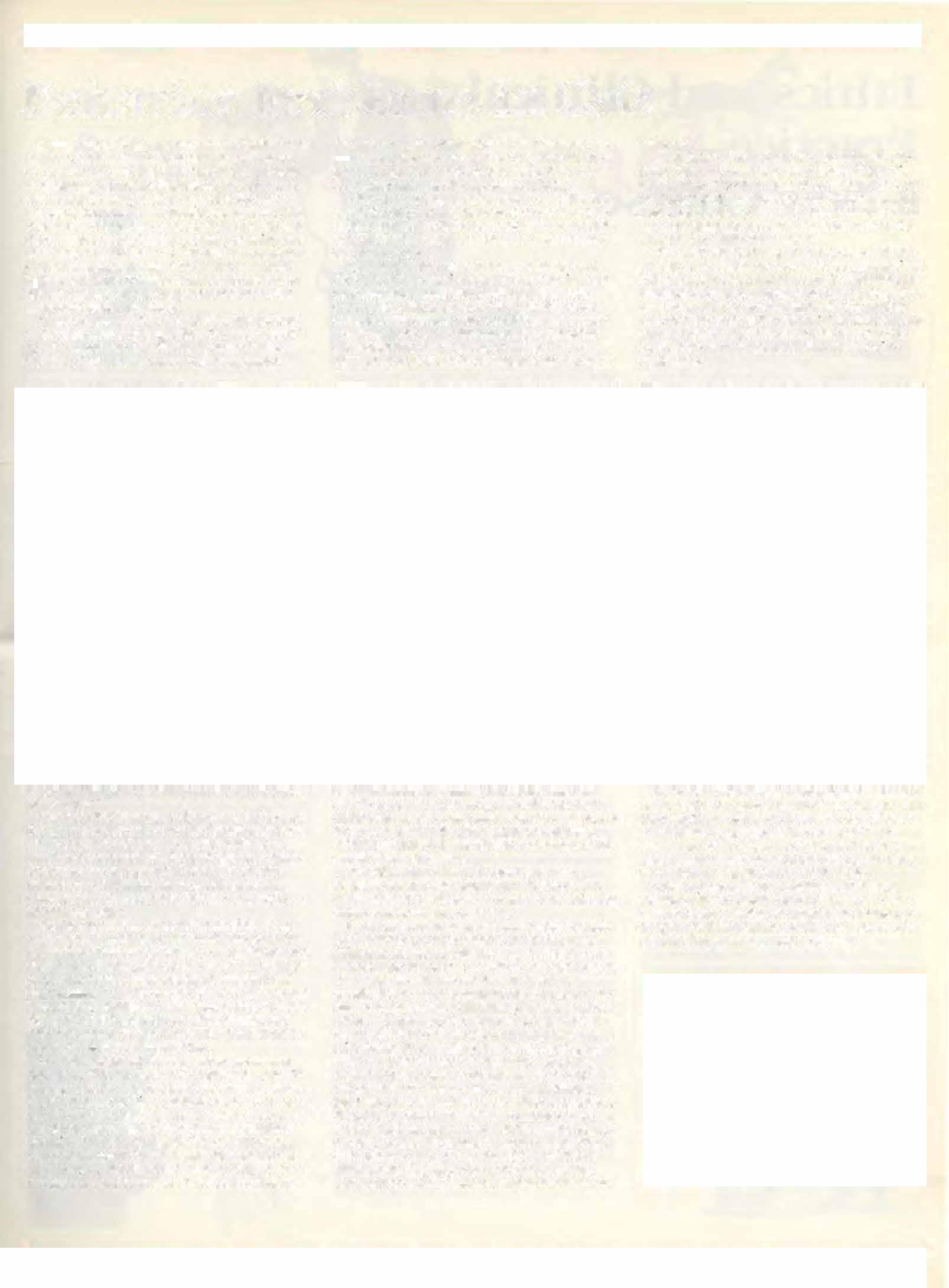
Theownershouldchangethelitter,useadifferent product.andtakethecatovertotheboxseveralumes aday.Insomecasesseveralboxeswithdifferentlitter mayhavetobesetup.Also,ownerscantrytoprevent acatfromusinganareaforeliminationbyputting foodorwaterthereortheeat'sbed. Undernocircumstancesshouldonepunisbthecatandthenputitin thelitterboxasitwillthenassociatetheboxw1th punishment.
involvrngbitingandscratchingandthesuddenpursuit ofanowner."
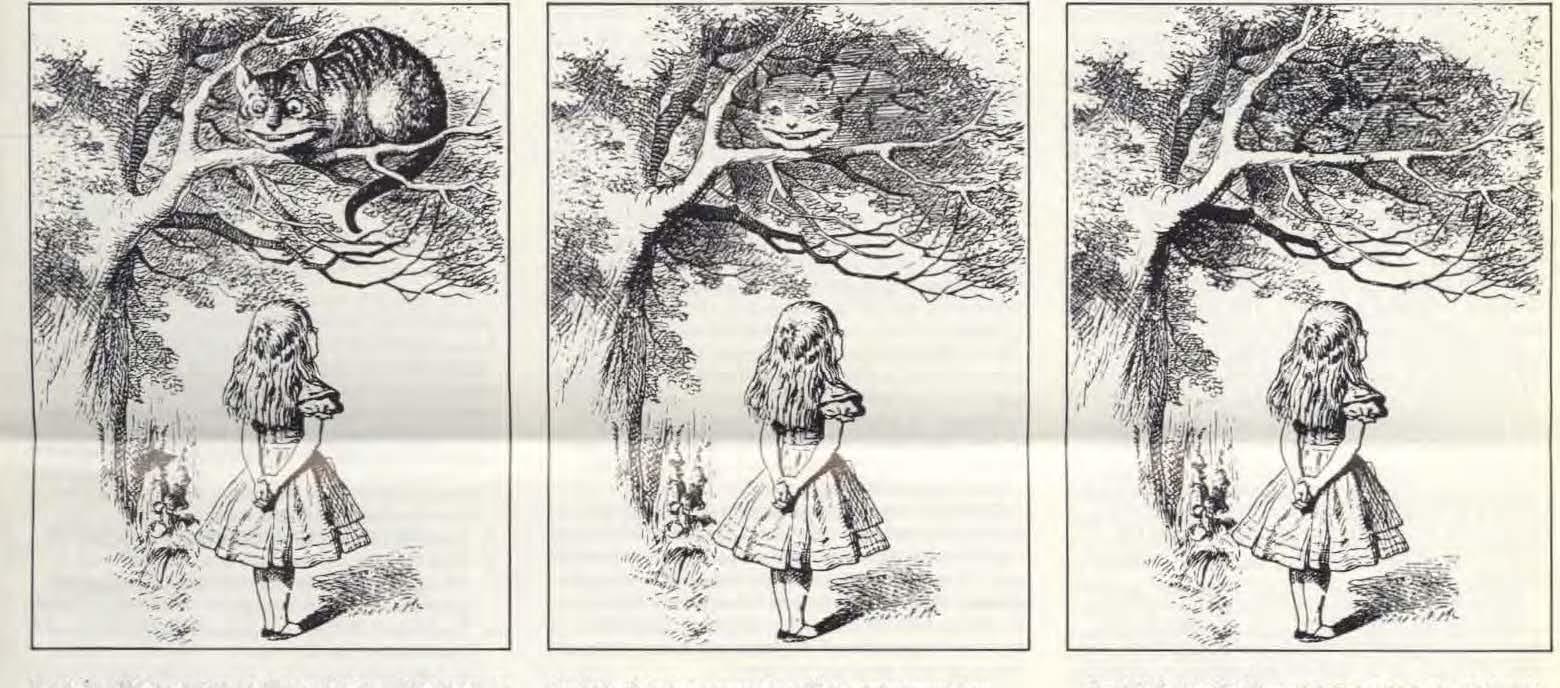
Dr.Voiththencitedacasehistory,seenbyherand Dr.Chapman.Thecat,asix-yearolddomesticshorthairedcat,livedindoorsandonedaysuddenly attackedthehusbandanddisplayedaggress1vebeba\'iortowardhimforaperiodoftime.Thecatwas takentothevetennananforanexaminationand receivedacleanbillofhealth.Thenitwasreferredto thebehaviorclinic.
Duringconsultationatthebehaviorclinic,athoroughhistorywastaken.hwasfoundthatontheday thecatfirstexhibitedthisbehaviorthefamilyhadbad visitor;withchildren.Thecatbadrunoutsideintolhe gardenandhiddenunderabush.Thehusbandhad triedtocatchit,butthecathadhissedathimandhad pursuedhim.walkingonitshindlegs,battingitspaws. Themanbadleftandreturnedwithablanket,and usedittocapturetbecat.Afterthat,wheneverthecat :.awthehusband.itthreatenedhim.
Dr.Voithdiagnosedthebehaviorasfear�lictted aggression.1llecatwasafraidoutside."shesaid."It wasapprehensive,veryaroused,andprimedtobedefensivetowardsanythmg.Whenthehusbandcaughtit andthecatdirecteditsaggressiontoward him,thecat wasfurtherfrightenedbyitscaptureandremained defenstvetowardthehusband."Thecatwastreated withacombinationoftechniques.Thehusband was advisednottodirectlyinteractwiththeanimal.tojust putdownitsfoodbutnotreachforthecat.Eventu-
canberedirectedaggression.Thepersonmaythen reactinawaywhichcausesthecattobecomemore afraid.Itthentakesalongtimetogettheanimalback toitsnormalself."Shedjdsaythatcatsexhibiting suddenaggressivebehaviorshouldbeseenbyaveterinariantoruleoutdisease.
Dr.Voithbrieflytouchedonthenotionthat declawedcatsaremoreaggressiveandcitedstudies whichrefutethis."Thereisnoevidencethatdeclawing causesacattobemoreaggressive."
Ryfartbemostcommonbehaviorproblempeople consultaboutisacatsrefusaltousethelitterbox. '"Thisisinessencealife-threateningsituationforthe catru.peoplewiUnotputupwithit."shesaid.''Butin moMcasesthebehaviorcanbecorrected.''She explainedthatcatsareprogrammedtouseloosesubstrateandthat,priortoeliminating,scratchingoflhe substrateisnecessary."Ataboutthreeweeksofage kitlenswillclimbintoLhelitterboxandscratch,"she satd."Whentheyareaboutfourweeksold,theywill begintousetheliuerboxtoeliminate."Call>have individualpreferencesforthematerialinthelitterbox, andownersmayhavetoexperimentwithdifferent products,sandorsawdustbeforealitteracceptableto theanimalisfound.''Sometimesalitterboxisnot cleanenoughandthecatwiJIlookforanotherplace," shesaid."Aliuerboxshouldbecleanedoften.When disinfectantisused,theboxshouldbeair-driedto eliminateanylingeringodoroftbeproduct.Also. manycatsdonotlikehoodedlitterboxesasodorcan
Dr.Voithbrieflydiscussedsprayingandsaidthatit canbeelicitedbyenvironmentalfactors.suchasother catsseenfromawindow.Castrationisveryeffective incontrollingspraying;spayingoffemaleshelps sometimes.About 10percentofcatscontinueto spray.theseanimalscanbetreatedwithdrugsand/or behavioraltechniquestostopsuchbehavior.
Whentryingtodiagnoseabehaviorproblem.a completehistoryisneededsothecliniciancandeterminethefactorselicitingtheundesirablebehavioL A completemedicalevaluationisalsoneeessarytorule outbehaviorproblemscausedbydisease.
Intheaftemo<•o Mr.RidtardGebhardt,past president oftht Cal FanciersAssociationanda notedcatsho"judge,discmvdjudgingprocedun.Healsoexplainedthebt«d�dardsfor tenbreedsofcats"bidJbadbeenbroughtto lhe\ymposium.Hispreentariun wa\ follo•ed by'"ASpectator\GuidetoCatShu"""gh·en byMr.Gene PhUii�drectoroflhtCal fanciersData(enter.Thefmalspeakerofthe day was Dr.JantR.Bicks,whogavl.'aninfermintla.lkon'"PracticalFelineNutridon.•
th1csissuesansmginclinicalpracticeareaddressedbyEthics9009, acorecourseforallstudentsat Penn'sSchoolofVeterinary Medicine.Thecourse,firstofferedinthe Fallof 1986.ispresentedinthe formatofEthicalGrandRounds. atechniquedesignedtomimicthemedicalandsurgicaldiscussionsstudentswillencounterintheirlater vearsatschool.
Forthelastdecade.medicalstudentshavetaken coursesdealingwithethicsandclinicalpracttce.Veterinaryschoolsj�t recentlyhavebegunto addressthis ISsue."ln lecturesandlaboratories,veterinarystudents aretaughttoidentifyandtreatanimaldiseases.relieve pain,andcareforlivestocktoensureplentifulfood products,andtheyareencouragedtoparticipatem researchtoadvancemedicalknowledge,..said Dr. SheldonSteinberg,professorofneurologyandoneof theorganizersofthecourse."Thesetasksappeartobe quiteweUdefined,yetinpracticetheyoftenareless clearandjudgmentisrequired.Therealityisthat veterinarymedicalpr-clctice(aseveryotheroflife'ssignificantendeavors)requiresjudgment.Thatjudgmentis notrestrictedtothepatient'sclinicalstatusandthe significanceoftestresultsalonebutincludesquestions aJsooftheproprietyofrunningthosetests.treatingor not.ofperformingeuthanasiaornot Th�eJUdgmentsmustbemadebecausethemereavallabihtyof technicalormedicalmeansorlegalprerogativesisnor necessarilyasufficientbasisformakingdecisions. Suchissuesarenotstressed inlectureswherethe emphasisisonidentifyingdiseasesandonmodesof treatment."
Ethics9009acquaintsstudentswiththeconflicts encounteredbypractitioners.ThesLx-weekcourse consistsoftheweeklypresentationofaproblem,discusstonbygroupsofstudentsandfacultymoderators, andasummarizationoftheviewpointsfromthesix d�cussiongroupsandtheclinicianpresenter.
··�weexploretheissueofjudgmenLwefindthat m<lrethanonepositionhasameasureof'rightness'," said Dr Steinberg...Hencethereisaconflict. lnthis coursethetopicandtheissueofconcernis'Ethicsand Chnical Practice-WhenGood PositionsConnict'."
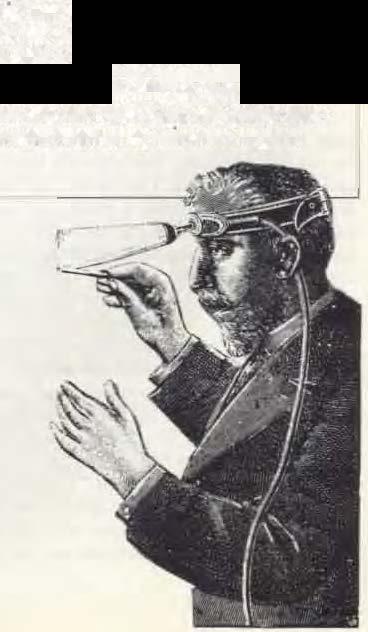
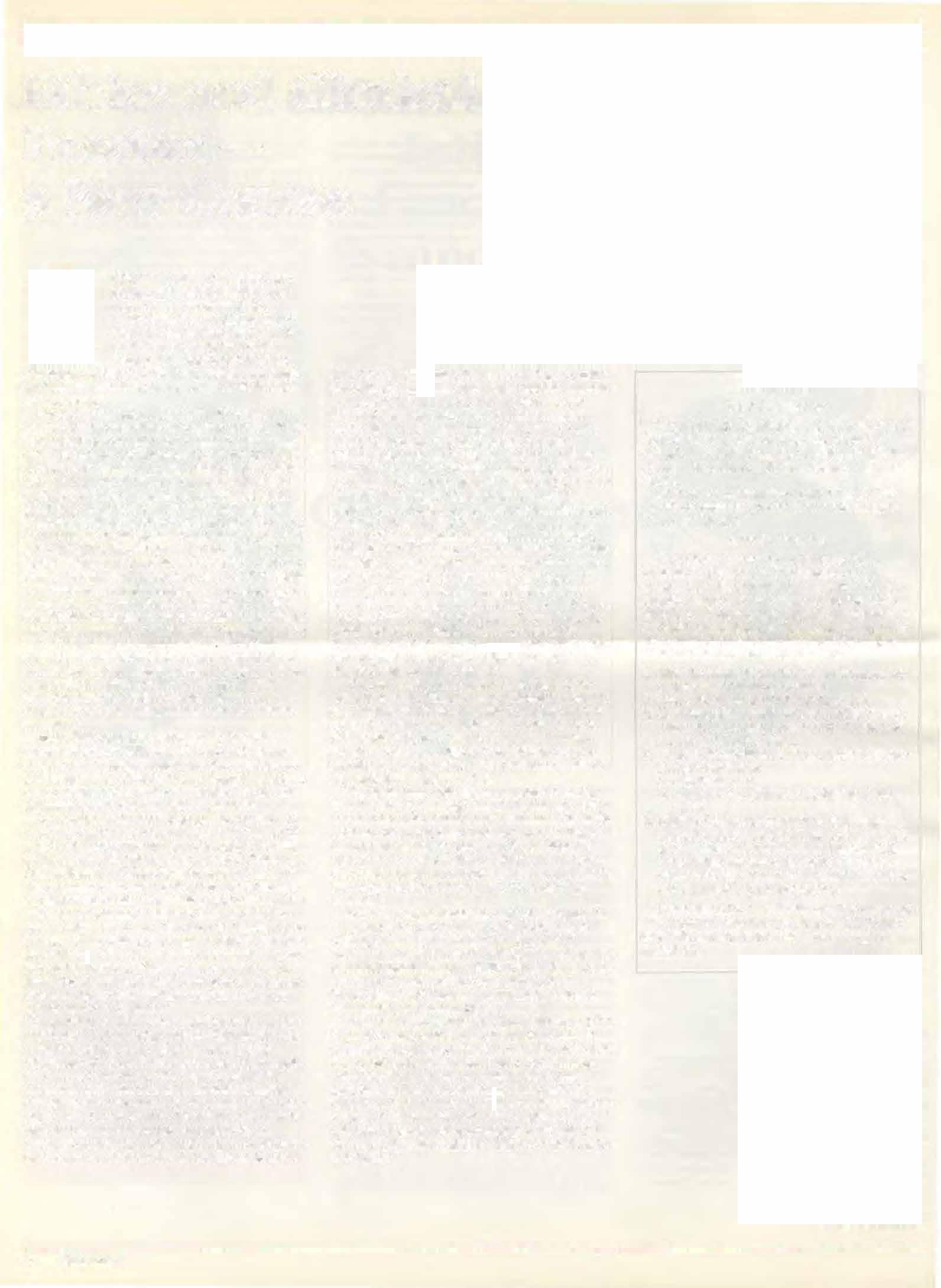
Thepurposeofthecourseis I)tobringreal-lifeethicalissuestothestudents'attention,2)todiscussthese andhenceencouragestudentstodiscoverandconsiderother1ssucsaslheyarise,3)todemonstratethat evenquestionswithoutclearanswersrequirerigorous, clearthinkmg,4)todemonstratethatcarefulandcritICalexplorat10nofconflictingissuesmayhelp usto choosefromamongtheissues,and5)todemonstrate thatlisteningtoopposingviewsmaystrengthenor changeone'sownopinion."
Theproblemspresentedbypractitionersandfaculty membersrangedfromthequestion''Shouldresearch an1malsbeusedtotrainveterinarystudents"to "Treatmentofthetenninalcancerpatient:howmuch, howfar.andhowoften."TI1ecoursepartiCipants examinedissuessuchastreatinganinjuredanimal broughttotheveterinarianbyabystanderandithavInga)anownerwhocannot bereached.b)anowner whoowesmoneyforprevioustreatment,c)an unknown ownerwhoauthoriLedtreatment and promisestocomebythenextday.Inanotherproblemthe
issuewasoneofreferral,howmuchtestingorexplorativesurgeryshould bedonewhenaspecificdisorder ISsuspectedbutItSscopeISnotfuJlyknown,and houldt.hecasebereferredtoateachinghospttal whichoffersmoresophisticatedtestsbeforeorafter testing/explorativesurgery.Studentsdiscussed informedconsentandhowmuch andwhatspecific informationtog1vesoadecisionforthetreatmentof ananimalcanbemade. Herethestudentshadtodeal withthedefinitionofinfonncdconsent.which requirestheveterinariantoprovtdeinformationabout thenatureofthemedicalcondition.thenatureand purposeoftheproposedtreatmentandprocedures. thelikelihoodofsuccess.therisksinvolvedorpossible sideeffects.andthealternativestoLheprocedureand treatment(ifany)andtheirpossibleconsequences. Duringthesedtscussionsitemergedthatinformed consentisnotasimpleissueandthatthecllem'sperceptionofthemedicalrealitydependsgreatlyonthe \cterinarian'spresentationoffactsaswell a�;the mannerinwhschtht"yareconvr\•ed lltew•tcrinarianc; ownconvictionsalsopia}antruportantroleintbe client'sdeciston-makingprocess.
Thefinalexam, atake-homeessay,requiredthe studentstodeaJwithsuchissuesasinformedconsent. experimentaltreatment.fees.andapendingresearch grant. Theyabo badtoaddressthegenerali:,rueof animalresearch,theprospectofimprovedhuman health,andtheimportanceofprofessionalgrowth, andtheywererequiredtopresentalternatepointsof viewandtheirresponsetothem.
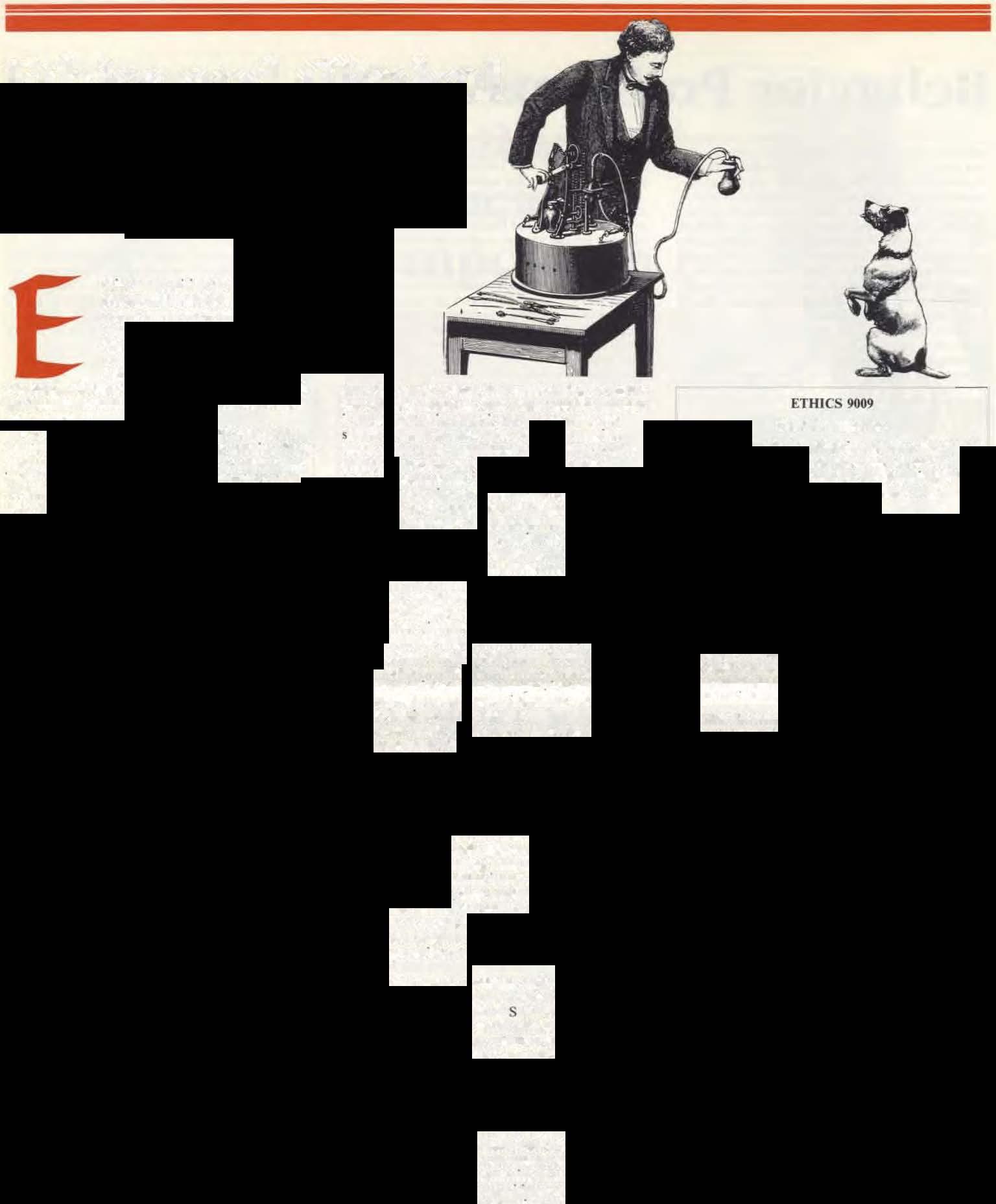
"WedeliberatelyofferthiscourseearlyinthestUdents'veterinarytraining.�said Dr.Steinberg...They canzeroinontheethicalISSuesunhampered bymedicalfacts.Ofcourse.t.heyaregivenpertinentmedical informationwithinlhecontextoftheproblem. We wantthemtobeawarethatveterinarymedicalpracticerequiresjudgmentandthat theissuesdiscussedin thecourseareJUS!thebeginningofacareer-long concern."
In theft.rstcourse.problemsderivedfrompractice wereofferedbyDrs.F.Rude,S. McDonough,N. Oakley.J. Simms.and H.S. teinberg. Drs.G. Kaufman,S. Helfand,andS.Schifferfromthefacult) presentedproblemsfromVHUP.ThefacultymoderatorswereDrs. AlanBeck,ColinHarvey,Joan Hendricks, MerylLittman.William Moyer,David Nunamaker.and RobertOrsher.
Thecoursewasdeveloped by Dr.SteinbergandDr. Donald A.Abt. professorofepidemiologyandbiostatistics."Wehopetointerestouralumniandtohave themparticipateinthecourse,"sajdDr.Steinberg. uwewantthemtobecomeinvolvedand topresent problemsencounteredinpracticetoourstudents. Onlyifwehaveabroadpractitionerparticipationcan weexposethestudentstothew1derangeofethical dilemmasencounteredbypracticingveterinarians.I dohopetohearfromalumniwillingtocontributeto thiscourse."
Pleaseidentifytheethical1ssue(s)thatDr.�obell faces. Stateyoursolution(s)tothoseissuesand defendyousolution(s)against anyobjecuon(s)that areasonablepersonmightraiseagainstyour view(s}.
Sinceyourunderstandingoftheissue!>iswhat wewishtoe..aluate,youarealltoworkindependentlyonthiscase.
TheonJ) bullownedbythe Black&Whttc HolsteinStudServiceofFreema.rtin.CT.hat; becomesuddenlyandmysterious!)sterile.ThedistraughtownersseektheadviceandserviceofDr. Nobel!,awell-knownandrespectedveterinarianin thisfieldofmedicine.Dr.Nobelldiagnosesthedisorderanddecidesthathisnewcorrectivesurgery mtghtbeJOthcatcd. Dr �ohdlkno"!>
I. Thatthetechniquehashelped88percentofthe experimentalratshehastreated;
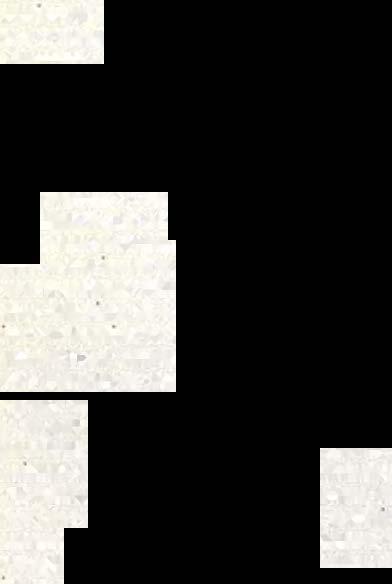
2. Thatonly4 percentofhisratshavedied;
3. ThaJtheexistingsrandardtreatmentforbuJlsis \erysafe batresultsan:onl)fair:i.e.,about40 percentofbullsarehelped;
4. Thatbis$4,000feeforvarioussuppliel>andprofessionalservicesis:
a. affordable.and
b. amodestcostrelauvetothehealthybun·� value;
5. Further,Dr. Nobellknowsthathispending researchgrantwouldbeenhancedifhetestshis methodona bull(eveniftheattemptfails). [f successful1nratsandbulls.thereisreasonto belie'ethatthistreaunentwillalsobebeneficial tohumanswithasimilarproblem.
Unhappily,ifDr.Nobel!fails.noothertreatment willbepossibleforthisbull. Also.anypriortreatmentwillprecludeemploying thtsnewsurgical treatment.
Eachyearitisestimatedthatthereareatleast 65,000casesofbloat(acutegastricdilation).The causeisnot known. ltISalife-threateningcondition andprompttreatmentis necessary.Thedilationofthe stomachmayleadtoto�ion(volvulus), which requir�surgicalcorrection.
Bloatusuallyoccursinthelargerbreeds.Thereis nohardevidencethatthereJSc1relationshiptofeeding practices,althoughmanyrecommendsmallmealstwo orthreetimesaday,withnoexercise1mmedtately af1erfeedmg.
Animmediatepriorityisresearchon theepidemiolOg}ofthecondiuon.Thiswouldmcludestudyinga numberofcas�ofbloatalongwuhthtsamenumber ofdogsthatdonothavetheproblem. Fcedmgpractices,dtet,bretd, houstng, exemse, andanyrelated factorwouldbeanal.red. l!>thereananatomicfactor? Couldtherebesome inhenteddefect?Whatarepredil>posingfactors?
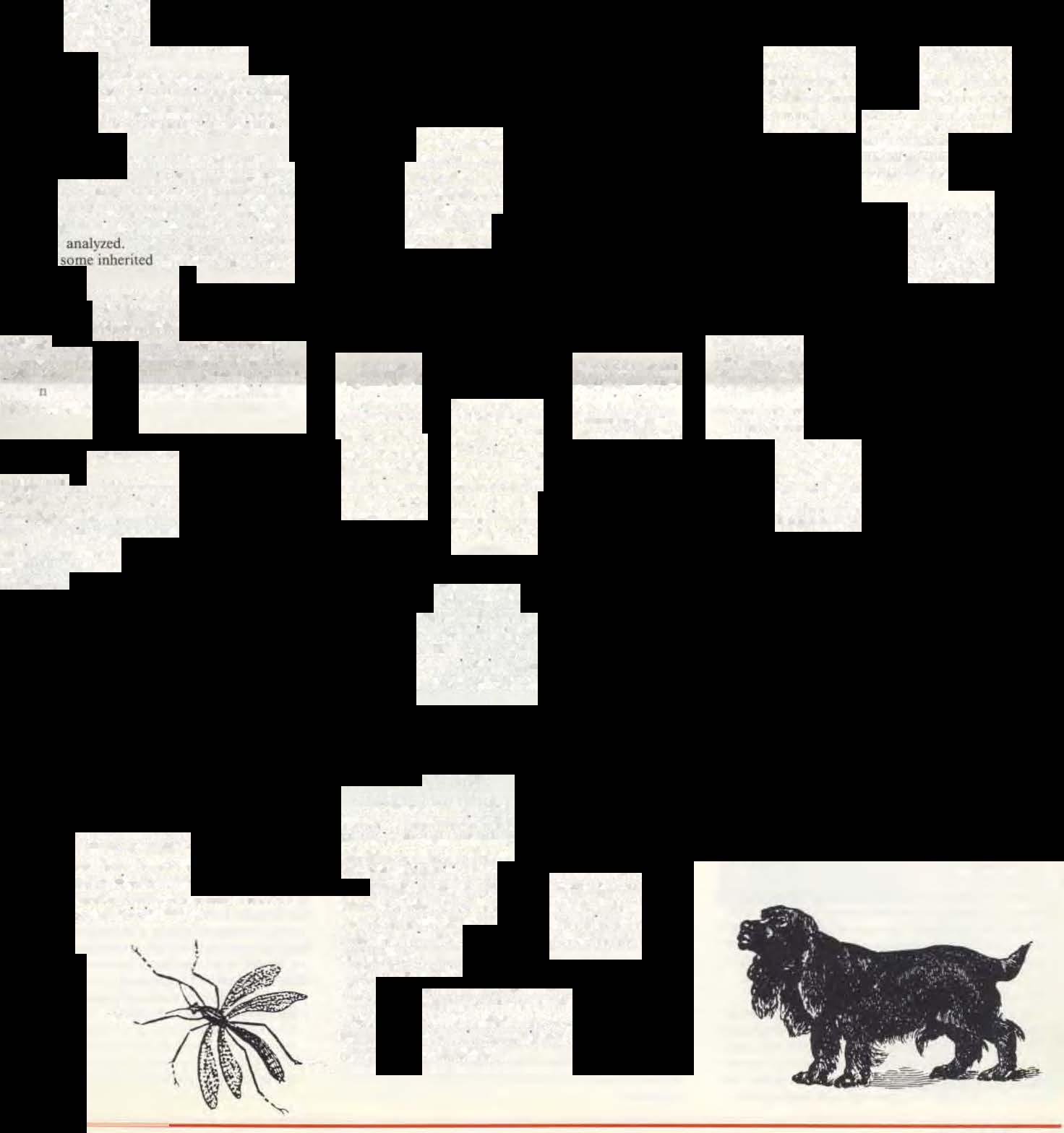
Untilweknowthecause.wecannot tell how to preventbloat.Studieshaveshownthat thereis abnormalgasandfluidproductioninthestomachof affecteddogs. Lncreased numbersofgas-producing bacteriahavebeenfoundinsomecases.butnot in otherl> What i sneeded are controlled studies to estabh�haparter •o.ho""'hntpn.:...-,tstlnbcondttiOrb ma}leadtobloating.
Hypoglycemia(decre&edbloodglucose)isnota diseaseinitselfbutoocursananumberofdifierent situauons Generally,the�ignsareneurologicalweaknel>llofthehmdle�generalittdweakness,muscletwitchmg.seizures,andbehavioralabnorrnaliues.
\'evnotalhypoglycemiaoccursinveryyoungpuppiesandmaybeduetotrauma,dehydration,orhypothermia.Ifsignsoccur,somesourceofglucoseshould begiven(Karosyrup.honey.ordextrosesolution). Thepuppymustbekeptwarm.
Juvemlehvpog/ycemia("roybreed"hypoglycemia) isseeninpuppiesofsmall breeds undersixmonths of age. Itcanbeprecipitated bystress(shipping,exposuretocold),fasting,gastrointestinaldisturbances, infectiousdisease, andparasitism.Theconditionusuallyresponds promptlytoglucoseadministration.
"Huntingdog ·• hypuglyt>emiahasbeenreportedin lean,high-'>trunghuntersthatmaybecomeweakand confusedafterseveral hoursol work,andmighthave grand malseizures. Ifhypoglycemicsignsoccur,a sourceofglucoseshouldbegiven�somesuggest candy barsasthemostavailableinthefield.
Theaboveconditionsareconsideredfunctional. Theyoccurinfrequenu}butcancausegreatconcern. Thereareothermorescnouscausesofhypoglycemia. lfthereisnotpromptresponsetoadministrationof glucose.veterinaryadviceISlndicated.
TheAmericanVeterinary MedicalAssociation reportsthattherewillbe2,140newveteri ariansgraduatingintheUnited States.TheUniversityofPennsylvania SchoolofVeterinary Medicinehad 113graduatesintheClassof 1987(73 womenand40men), Thereare 109studentl>intheClassof1991,enteringin September 1987. Approximately60percentofapplicantsarewomen.40percentaremen.ThenewFirst YearClassincludes71 fromPennsylvania,28from contract states(NewJersey 15,Maryland 5.Connecticut2. Delaware2.Vermont2, NewHampshire l.and Maine 1).and 10from otherstates.Therearenoforeignstudentsinth1sclass.
"ContractStates"arethosethatmakeagreements withPennsylvamatoacceptades1gnatednumberof studentsfromthosestateseachyear. Maineand Puerto Ricosendonestudenteveryotheryear.

Therehavebeen4,281 veterinariansgraduatedfrom the Universit)ofPennsylvaniasincethefirstclassin 1887.
Recently.researchersatthe UniversityofCalifornia c;;choolofVeterinaryMedicinediscoveredanewretro•'lrul>mcat�.namedFelineT LymphotroptcVtrus (FrlV). Incats,FTLVsuppressestbeimmunesystem,resultinginincreasedsusceptibilitytoawidevarietyofinfections.FTLV lScontagiousandspreadby intimateandprolongedcontact. \1uchpublicityhas beengtventhisdisco\ery.particularlyasamodelin humanAIDSresearch.Investigationsareunderwayto determinetbegeographicc:xtentofFTLVincats. ThereisnoevidencethatFTLVistransmissibleto humans.
Atthepresenttime,theviruscausingAIDS in humansisnotknowntoinfectdogsorcats.No AIDS-likevirushasbeenisolatedfromdogs. Therehasbeenmuchinaccurateinformationpublished abouttherelationshipbetweenFeLV,FTLV, and humanAlDS. Also, manyreportshavebeenmisinterpreted. More IS betnglearnedeverydayandcontinuingresearchwill provideanswerstomany questions.
Thedrugivt-rmectinisnowavailablebyprescription fromaveterinariantntabletform(Heortgard-30). Given mtherecommendeddoseonceamonth.it is effectiveagainstthedevelopingtissuestageof Dirofilariarmmrt1s.Theproperdoseshouldbegiven atmonthlymtervalsduringtheperiodwhenmosquitoesareactive.Theinitialdosemustbegivenwithina monthafterthertrstexposuretomosqUitoesandthe finaldosewtthinamonthafterthelastexposureto mosquitoes.
Thedrugisnoteffectiveagainstadultheartworms andisnot recommendedforheartworm-positivedogs.
Someveterinariansseemtopreferusingdiethylcarbamazine(DEC)whichmustbegivendaily. Because ivermectintSaprcscnptiondrug,discuss its usewithyourveterinarian.
lnthebitch,thenumberofdaysbetweenmating and birthrangesfrom58to71 days. Severalmethods areavailabletoconfirmpregnancy-abdominalpalpation,radiography,a dultrasonography.Anexperiencedpersonmaydetectthefetusbypalpationat21 to28days. Largebitchesaremoredifficulttopalpate. Radiographswillshowthefetalskeletonafter45days. AlthoughthislSrelativelylateingestation,itremains themostaccuratemelhodofestimatinglittersize. Ultrasoundexaminationcandetectthefett�Sasearly as 18days.Apainless,harmlessprocedure,ultrasound isagoodmethodforconftrrntngpregnancy.butisnot asaccurateasradiographyforestimatingnumberof puppies.
Theproblemofover-populationis aseriousone. Millions ofabandoned orunwanteddogsandcatsare euthanizedeachyearbyhumanesocteties.Abitch should notbebrediftheownerdoesnotacceptthe responsibilit)forlifetimecareofthepuppies. Spaying (ovariohysterectomy)isthebestmethodforcanine birthcontrol.Thiscanbedoneeasilyandsafelyduringtheflrstthreeweeksofpregna cy. Reversiblecontraception�possibleusingdrugsbuttherearemany problemsreportedwhensuch attemptsaremadeto prevent estrusand postponelitters. Continuing researchmaydeveloppharmacologicagentsthatcan beusedasabortifacientsortopreventconception.
Manybreedersofpurebreddogshavepuppiesthat theyfeelarenotsuitableforbreeding. lfthereisa writtenagreementbetweenthebuyerandseller,signed bythebuyerbeforetbedogleav�theseller's premises,AmencanKennel Clubregistrationpapers willnotbefurnishedtothebuyeruntilthesellerhas beenfurnishedwilhevidencethatthedogbasbeen neuteredorspayed.Spay- euterContractsareacceptableunderA.K.C. rules.
AmericanKennelClubregtstrationstatisticsfor 1986show that CockerSpanielsarethemostpopular breeds,followedbyPoodlesandLabradorRetrievers. TheCockerisnumberoneforthefourthyearina row.Theothersinthe"TopTen"areGolden Retrievers,GermanShepherds,ChowChows, Beagles,Miniature Schnauzers, Dachshunds.and Shetland Sheepdogs
ln 1986, 1,106,399individualdogswereregistered. Thereisevidencethatthereisarisinginter�t inthe smallerbreeds.Seniorcitizenslookingforcompaionsfmdsmallerdogsmoremanageable. Youngurban couplesmayprefersmallerdogsbecausetheyrequire lessspace.

Dr.DarrylN.Biery,professorofradiology.and chairman,DepartmentofClinicalStudies(Philadelphia),receivedthe1987AAHAAnnualAwardatthe organization'sannualmeetinginPhoenix,AZ.
Dr.KennethC.Bovee,CorinneR.andHenryBower ProfessorofMedicine,andchief,SectionofSmall AnimalMedicine,hasbeenelectedrepresentativeof thefacultyconstituencyoftheSenateExecutive CommitteeandtheUniversityCouncil.
Or.CharlesNewton.professoroforthopedicsurgery. andchief,SectionofSurger).receivedtheLiodback Foundationawardforexcellenceinteaching.
Or.RobetE.Davies.,BenjaminFranklinandUniversuyProfessorofMolecularBiology.basbeenelected tothe1987188UniversityCouncilSteering Comm1ttee.
Dr.GerhardSchad,professorofparasitology,traveled toShanghaiandHangcbow,China,withDr.Michael PhilipsfromtheMedicalSchoolandDr.George DavisfromthePhiladelphiaAcademyofScienceto exploretbeorganizationofacollaborativeventurein infectiousdiseaseresearch.InJuly,Dr.Schadlectured onparasitesattheSchoolofVeterinaryMedicine, FederalUniversityofBahia,Salvador,Braz.il.Thetrip wassponsoredbytheLatinAmericaVisitingProfessorProgram,sponsoredbytheAmericanSocietyfor Microbiology.
Or.RalphE.Werner(V'68)hasbeenelectedpresident oftheNewJerseyVeterinaryMedicalAssociation.
InApnl,1987,theoutstandingworkofDr.Ralph Bnnsterongenetransplantationwasrecognizedbyhis electiontothe ationalAcademyofSciences.Many scientistsconsiderelectiontotheAcademyasan honorsecondonlytotbeNobelPrize.
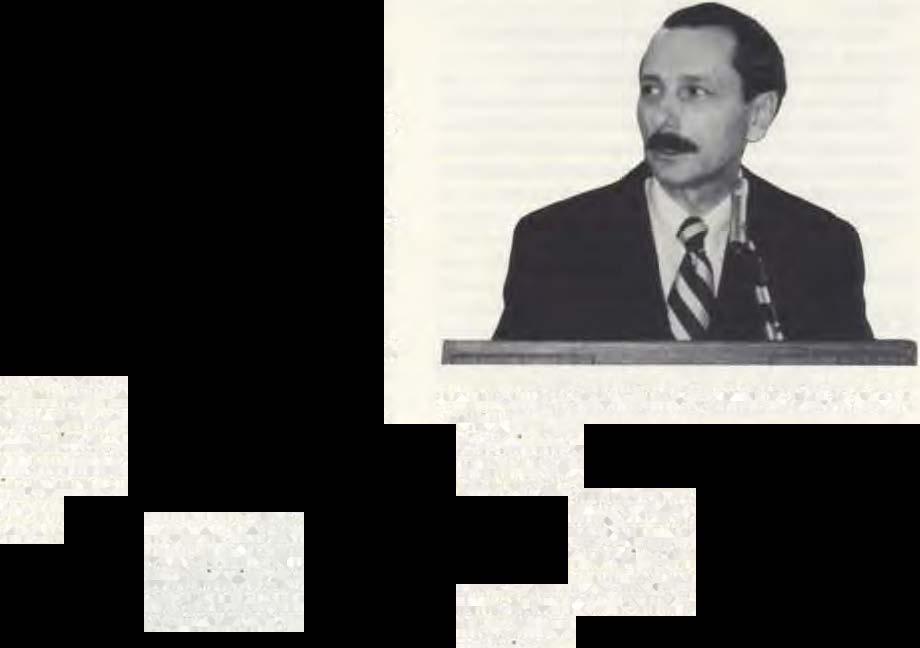
Essentially,Dr.Brinsterandhisprincipalcolleague, Dr. Richard Palmiter,throughtheirpioneeringwork withgenetransplantationhavedemonstratedthat genescanbemovedfromonemammalianspeciesto anotherandthatthegenescanfunctioninthenew animal.Dr.Palmiterisanuclearbiologistatthe HowardHughesMedicalInstituteattheUniversityof Washington.ln1982,theBrinster-Palmiterteam achievednationalattentionwhentheysuccessfully transferredahumangroWlhhormonestructuralgene wh1chcausedmteetogrowtotwicenormallevels.
Whilethisprocedurewasascintillatingbreakthrough.Jtspotential'alueinmedicalresearchiseven greater.Forexample.theresearchershavebeenable totransplantindividualoncogenesintomouseeggs andproducemicethatdevelopspecifictypesof cancer.ThtSapproachenablessc1ennststoidentify exactDNAcodingsequence!>inanimalgenesthat causecancerandtargetittospecificcells.
Thegeoetransplantationtechniqueoffersexciting possibilitiesinanimalindustry,suchastheproduction ofanimalsthatgrowlarger.producemoremilk,and gainweightmoreefficiently.Further.thereisthepossibilitythatanimalsreceivingtransplantedgenesmay become"genefarms"togrowvaluablehumansub-
Or.StuartPorter(V'74).professorofveterinarytechnologyatBlueRidgeCommunityCollege,Weyers Cave,VA,receivedthe1987OutstandingFaculty AwardfromVirginiaGovernorGeraldL.Baliles.
Or.JamesW.Buchanan,professorofmedicine(cardiology),presentedpapersonbioprostbeticheart valvecalcificationaltheAcademyofSurgical ResearchinClemson,SC.inNovember;theInternationalAssociationforCardiacBiologicLmplantsin Chicago,LL.inApril;andtheSocietyforBiomaterialsinNewYork,inJune.Healsopresentedthree papersonheartsurgeryinanimalsattheEuropean SocietyforVetennaryCard1ologymeetinginRome. Italy,inMay.
Dr.LinV.Klein(V70).associateprofessorofanesthesia.pnrticipnted asan invitedspeakerinaresearch meetingheldinassociationwiththeInternational Symposium ClinicalNeuromuscularPharmacology: 1987inPalmSpring�.CA.
Dr.JudithA.Rutkowski,residentinsurgeryatNew BoltonCenter,presentedapaperenlitled Xylazinef burorphanol:Effects011�eca/arterialbloodflow. cecal mechanicalacti\oity attheAmericanCollegeofVeterinarySurgeonsmeetinginSanAntonio,TX,in February.
Dr.Ga.rySmith,assislantprofessorofpopulation b10logyandepidemiology,presentedthekeynote addressatthe32ndAnnualMeetingoftheAmencan AssociationofVeterinaryParasitologistsinChicago, fL,inJune.


Dr.RobertKenney,professorofanimalreproduction. receivedaspecialdiplomaofappreciationfromthe AcademyofAgricultureinKrakow,Poland,aswellas amedalawardedinmemoryofProfessorLadislai Bielanski.
Or.AlanM. BeckoftheCenterforthelntentctiooof AnimalsandSocietyisontheplanningcommitteeof the IHAssessmentWorkshopontheHealthBenefits ofPets.HeandOr.Aron Katcherwillpresentpapers duringtheconference.TheCenterreceivedagrantof $45.000fromGeraldineR.DodgeFoundationLo study 17leinfluem:t-ofhuman'"ilnimalinteractionon teaming. Thefoundationalsoprovidedachallenge grantof$35,000fortheproject Veterinaryandeducationsrratege.sfor1hecontrolofrabiesindomestic animal.sandhuman.s. Thisgr.mtwasmatchedbytbe DepartmentofPublicHealth.CityofPhiladelphia. ThePetIndustryJointAdVISoryCouncilawarded twograntsofS17.710eachtotheCenterforthestudy ofTheferrel,ferrerownerandperson-ferr�Jinteracuon andfor Theroleof1hepetinthejingleparem home. Dr.Beckwillbetheprincipalinvestigatorfor thesetwostudies.
Dr.WilfredT.Weber,profeJ>sorofpathologyand chairman,departmentofpathobiology,wasoneofthe editorsofAvian lmmwwlog)� ProgressinClinicaland BiologicalResearch, Vol.238.
Or. Mark J\1.Smith(l''82).tttaincddiplomatestatu$ intheAmencanCollegeofVeterinarySurgeons.
Mrs.Charlotte'JewtonSheppard.Chaitmanofthe BoardofHanoverShoeFarms.diedAprill8,1987.ai age88.followingalongillness.Sincethedeathofher husband.LawrenceB..in 1968. Mrs.Sheppardhad devotedmostofherenergiestoperpetuatinghh dreamofmakingthevastPennsylvaniaStandardbred nurseryoneofthegreatestbreedingfarmsinthe world.
stancessuchasbloodfactor9.whichisvita!toblood clotting.
Dr.Bnnsterreceivedh1sV.M.D.degreein1960and immediatelybeganpostgraduateworlcintbeGraduate SchoolofArtSandSc1ences,beingawardedhisPh.D. degreeinphysiologyin1964.S1xyearslaterbe becameprofessorofph)•siology,andin1975hewas namedtheRichardKtngMellonProfessorofReproductivePhysiology.Hedevelopedanearlyinterestin studiesonembryonicdenth,followedbyresearchon embryodifferentiation,fertilization,andregulationof geneacuon.
TheNationalAcademyofScienceswasestablished byacongressionalactin1963,andonrequestitacts astheofficialadvisortothefederalgovernmenton scientificmatters.Itcurrentlyhas1,523living members.
Themostfamousracehorsebredandracedby Mrs.SheppardwasTripleCrownwinnerAyres (3.1:56.4).AstakewinnerinthiscountryandEurope. hergreatracemare.Elma.alsobecameaveryproductivebroodmareasthedamofTexas.Jappa.,and SuperElma.AnotheroutstandingmemberofMrs. Sheppard'sstablewasthefmepacingmare,Pretty Hanover.
Justasherhusbanddidin1967whenbeendoweda ChairinVeterinarySurgery,Mrs.SheppardestablishedtheCharlotteNewtonSheppardProfessorship inVeterinaryMedicine.ThisendowedChairisheldby Dr.DonaldPatterson.arenownedmedicalgeneticist.
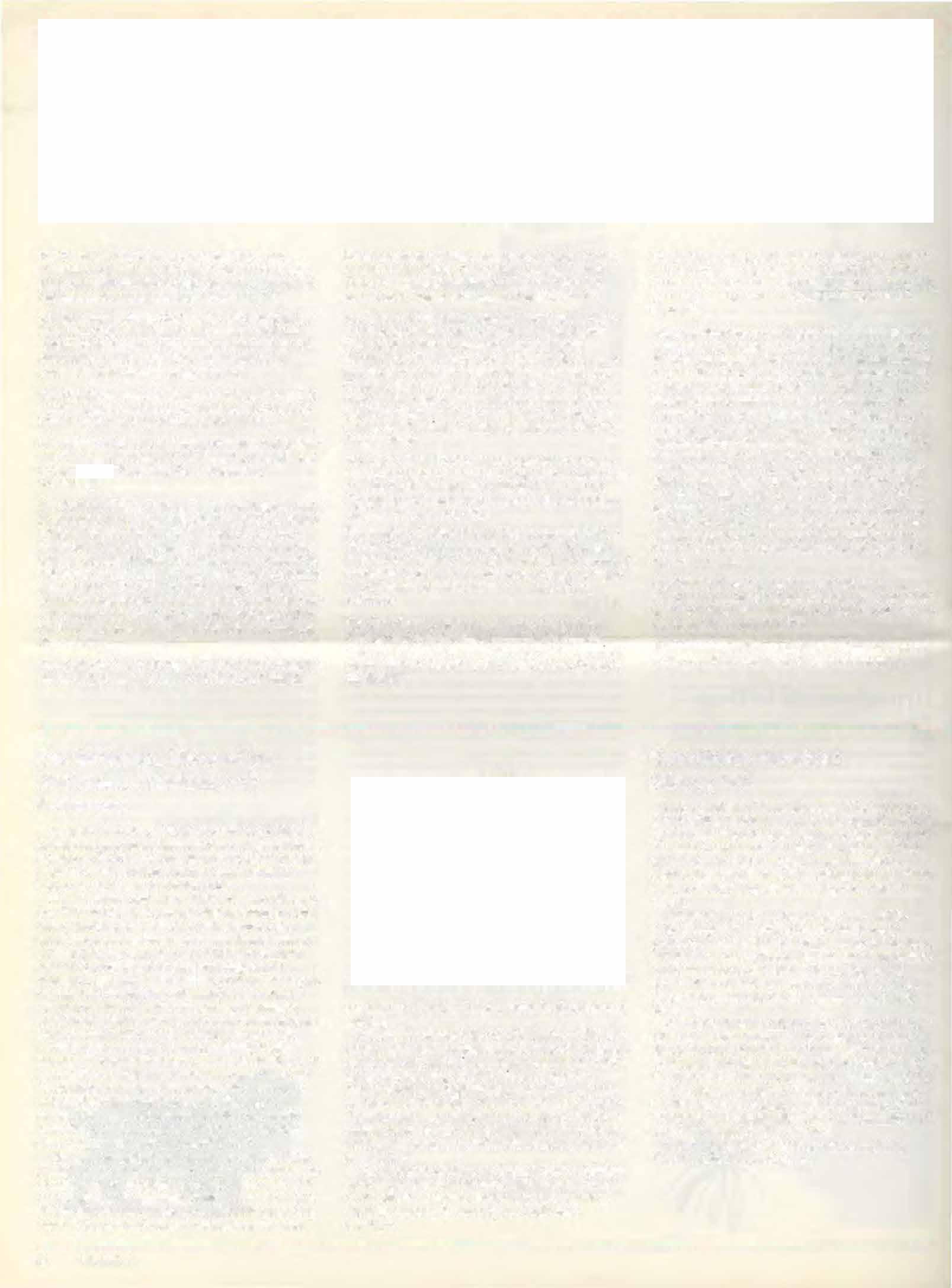
Mrs.Sheppardplayedaleadingroleinmanaging theHanoverShoeFarms�avaluedsupporterofthe UniversityofPennsylvaniaSchoolofVeterinaryMedicineNewBoltonCentercampus.
Mrs.Sheppard ssurvivedbythreedaughters. Charlotte,Patricia.,andAlma.
Or.PeteT Ihrke(V'72). associateprofessorofdermatologyatthe UniversityofCalifornia,Davis,School ofVeterinaryMedicine.waselectedtheincomingpresidentoftheAmericanAcademyofVeterinaryDermatology. InDecember.Dr. Ihrkereceivedthe HAL Awardforcontributiontovetennarydermatology gtvcnbytheWorldSmallArumalVeterinaryMedical Associationattheirintemationalmeetingheldin Par�.France.
TheResearchFoundationoftheUniversityofPennsylvaniaawardedagrandto Dr. Charles E.Benson, associateprofessorofmicrobiology,foraprinterfora scintillationcounter.Dr. PeterJ.Hand(V'6l), professorofanatom}.and Dr. Jacqlleline Metzler(V'SS) alsoreceivedagrantfortheproject Correlatesofsen.wrydisuseandrecoveryoffunction:Aworadiographicdeoxyglucose:.1udiesofjunctionalplasticityin theratvibrissal-corticalbarrelsystem
Or. Robert H. Whitlock. Marilyn M. Simp:,onProfessortn Equine Medicine,\\asaninvited speakerat theAmerican Guernsey Association National Meeting inPinsburgh. HistoptcWa:lJaime'sDiseaseinCaule.
Dr.Whitlock.,Dr. Voith.and Dr. Gail K. Smith (Vi4). assistantprofessoroforthopedics.presented papersatthe39thAnnualMeetingoftheMorris AnimalFoundationinIndianapolis,lN.inJune. Or. Corrinne Sweeney,assistantprofessorofmedicine, partlcJpatedinapaneld�cussionattheAri2ona VeterinaryMedicalAssociation'sContinuingEducationseminarinSedona,AZ.inAugust.
Drs. CharlesBenson. Jonathan Palmer(Vi7). Ellen Ziemer, Richard Meinersmann (V'85), and Robert Whitlockpresentedpaper..atanationalworkllhopon PotomacHorseFeverin LouiS\'ille,KY.1n May.
Dr.ThomasJ. Divers, associateprofessorofmedicine,wasaninvitedspeakerattheUniversityof MontrealMayConferenceand presentedthreeseminars.Dr.Diversspokeatthe ArizonaVeterinary MedicalAssociation'sContinuingEducationseminarin Phoenil(inJulyandpresented aseminaron PracJical tJnlun,ooiollit.idn.a .ent"'lytelht·ra(IJm quine pructice.
Dr. Jay P. Farrel� associateprofessorofparasnology, isparticipatingintheWHO lmmunologyResearch andTrainingGroupattheUniversityofLausanne. Switzerland.
Dr. VictoriaVoith, adjunctassistantprofessorofmedicine,presentedthreepapersattheinternationalmeeting, TheDogintheServiceofHumonit}:heldin Geilo,Norway,in May.
Dr. Lawrence R. Soma (V'57). professorofanesthesia, presented apaper,Steadystatelevelsofanesthesia,at lhcColloquiumon RecognitionandAlleviationof Animal Painand Distress,sponsored bytheAmerican Veterinary Medical A�ociation,held in May m Chicago.IL.
Dr. Carl E. Kirkpatrick (V'8l), assistantprofessorin veterinarypathobiologyattheUniversityoflllinois, CollegeofVeterinaryMedicine,recentlyreceiveda l'.;ationalInstitutesofHealth InvestigatorAwardfora prOJt:Ctnutled Cwaneowlel.Jzmamarh Rob•ofskin inhostresistance.
Or.Gert W.Niebauer,assistantprofessorofsurgery, represented DeanMarshakattheBicentenaryofVeterinary Educationin HungaryattheUniversityofVeterinaryScience,Budapest,in May. Duringthescientific meeung,Dr.Niebauerpresentedapaper,Surgeryof neoplasmsoftheconmeskull:Indicators-limitations.
Dr. l�neJLive(V'34),emeritusprofessorofmicrobiology,presentedapaperatthe 1987 Annual MeetingoftheAmericanSocietyforMicrobiology.

Dr. Sally 0.Walshaw(ViS), anassociateprofessorin theVeterinaryTechnology ProgramatMichiganState University,hasbeennamedtheMichiganStatewinner oftheBustadCompanionAnimalVeterinananAward forthesecondyearinarow.
Edward Resovsky, formerlydirectorofdevelopment attheSchool.hasbeenappointedtoanew positionin theUniversitydevelopmentoffice. Behasbeennamed directorofprincipalgiftswithinthemajorgifts program.
TheW.AltonJonesCellScienceCenter,LakePlacid, NY, heldthe ThirdAnnualSymposiumonCellular Endocrinology;thisyear'seventwasheldinhonorof Dr.RalphL. Brinster(V'60), RichardKingMellon ProfessorofReproductivePhysiology,andDr.LeRoy C.Stevens.
Dr. William A.Moyu,associateprofessorofsports medicine,participatedintheSecondAnnualBluegrassLaminitisSymposiumheldinJunein Lexington,KY.
Dr. George C. Farnbach (Vi4), associatedirector, corporate sponsoredresearch,hasbeenappointed adjunctassistantprofessorofneurology.
Dr. Martin M. Kaplan (V'40)receivedtheHonorary DoctorofScienceDegreefromtheUniversityof Wisconsm.
Dr.Sheldon A. Steinberg(V'59),professorofneurology.hasbeenelected presidentofthespecialtyneurology.AmericanCollegeofVeterinary Internal Medicine.
On May21, 1987,theBoardofOverseersofthe SchoolofVeterinaryMedicineunveiledaportraitof Dr.RobertR.Marshak.Theportrait.agiftfromthe Board,wiUhangintheSmallAnimalHospital's newly-dedicated Robert R.MarshakGallery.
TheVeterinaryStudentGovernmentattbeSchool presentedtheAnnualAwardsforExcellenceinTeachingonApnl24. Dr. Dudley E.Johnston,prof�orof l>Urgcry.receivedtheClassof 1988award:therecipiem oftheClassof1989awardwasDr.LawrenceT. Glickman(V/2),professorofepidemiology:Dr.Joan Hendricks(V79),assistantprofessorofmedicine. receivedtbeClassof1990award;Dr. Dante! Dreyfuss, interninmedicineandsurgery. NewBoltonCenter, recei\edthe Classof 1987award. TheClassof1987 alsopresentedExcellencetnTeachingawardstoDr. WilliamBernard.residentinmedicine.NewBohon Center; Ms.SharonSw1ft,anesthesianurse.VHUP; andDr.JeffreyA. Wortman(V'69),assistantprofessorolradiology.
ow
TheVeterinaryStudentGovernmentAwardfor ExcellenceinTeachinghasbeendesignedtoenable eachofthefourclassesoftheSchooltohonoran indivtdualwhoexemplifiesthehighestdegreeofproficiencyinteaching.
Thereceptionwasco-sponsoredbyBertholon Rowland Agencies.AmericanAnimalHospitalAssociation,PennsylvaniaVeterinaryMedicalAssoctation, Veterinary MedicalAlumniSociety,andTheUpjoho Company.
MarkT.Lutschaunigr«eivedthe1987Pf'11erVeterinary tudentAward. Backr ,lefttoright:Dr.DanielDreyfuss,Dr.Wiliam Btmarct.Dr.Jeffre)Wortman,Dr.DudleyJohnston,Dr. LawrenceGlickman.Frontrow.ldttorigh�Dr.Ellen Ziemer.Dr.Joan Hendricks., SharonSwift.987 marks the fl.fty-lhird year ofDr. M. Josephine Deubler's association with the Veterinary School. Sheentered the School as a student in 1934, and in 1938 she became the first womangraduate. After receiving her V.M.D. degree, Jo, assheis affectionately known to a multitude of friends, earned her master'sdegree in 1941, and in 1944 she wasgranted a Ph.D. d.:gree. Thesewere lhe first graduate degrees received by a woman veterinarian.
Dr. Deubler's cho1ceofvetcnnary medicineasa careerhasa strong hereditaryaspect. Herfather. Dr. Ernest C. Deubler(V'll) was a weU-known practitionerand played a key role in theearlydevelopment ofthe VetennarySchool. Her brother. Dr. James A. Deubler{V'43), has abovine practice, and,inaddiuon, an uncle was a veterinarian, asaretwocousins.
Beginningin herearlyyears. Jo had acloserelationship with farm ammaJ.s. dogs, and horses. As a young ladyshewon manynbbonsand trophies for horseshow competition.
When Dr. Deublerentered veterinaryschool, she had a serioushearingproblem which shecompensated forby tip readingduring lectures. Also, she becamea voracious reader ofveterinary literature, a practice which has continued. Her graduate thesis was on periodic ophthalmia in horses, and after receiving her Ph.D. shespent two years teaching tropical medicine atJefferson Medical College 1n Philadelphia. Dr. Deubler was appomted as an ass1stant m pathology in theVeterinary School in 1941, and 10 1955 she became
Mr. Dav•dGeorgeJonesdied at his residence on Sunday. April 12, 1987. at theageof85.
David Jones, the husband ofthe late MarionDilley. wasa graduate ofthe University of Pennsylvania WhanonSchool, Classof 1924.
Mr.Jones pursued manyavenues of business. In 1924, he became production manager ofMiUer Lock Company. He moved on to assume responsibilitiesas an executive ofN. W.AyresCompany, and then in 1940as the manager ofradiostation WLAW in Massachusetts. Later, hewasan executive at the publishingbouseofMcGraw Hill, a post heheldfor manyyears and fromwhich he retired in 1960.
DavidJoneswasveryactive in local affairs, serving as pastpresident ofthe Marlton Rotary Club. Be also chaired the EveshamTownship Planning Board for fiveyears.
As a memberofthe Philadelphia Societyfor Promoting Agriculture and the Quaker City Farmers, he contributed much to the advancement ofagriculture.. An avid dairy farmerin NewJersey, Mr. Jones also served as president ofthe '�lewJerseySocietyofPennsylvania. Through hisinterest in conservation, he acquired astLable tract otland in Maine, which he mainlalned astimberland until shonly before his death.
In 1977. hecreated "The Marion DiUey and David GeorgeJonesAUam House Fund''to.support and maintain the Allam House on the New Bolton Center campus.
In 1983, acharitable remainder unitrust was formed by David Jones as a tribute to the work ofthe School ofVeterinary Medicine. With commendableforesight, this distinguished University of Pennsylvania alumnus
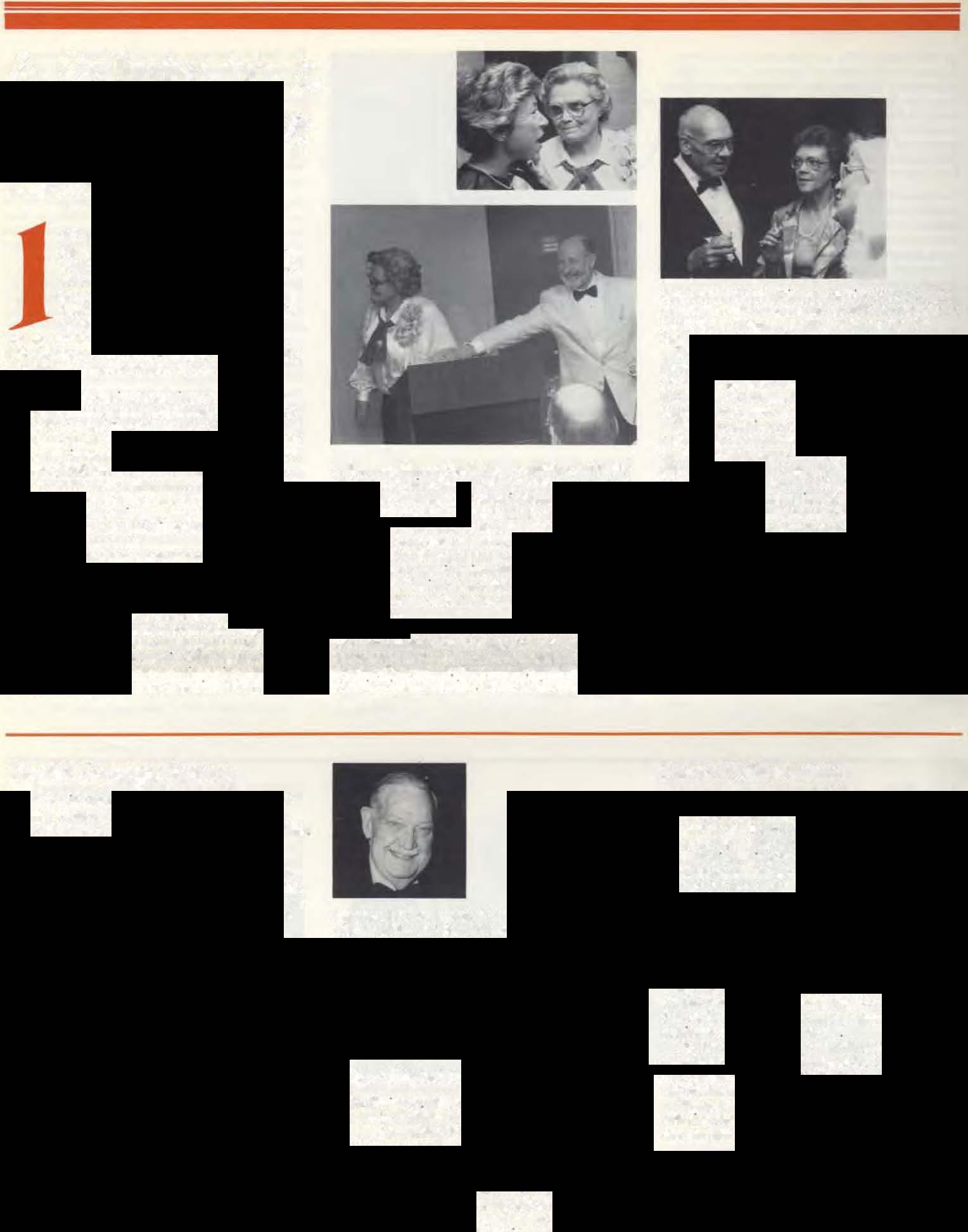
assistant professor ofpathology. a position which she still holds. Dunng theyears 1946 to 1952, she y,orked wuh Dean Raymond A. Keiserm bacteriology, including research on felinepanleukopenia and bovinekeratitis. She was in chargeofthe clinical pathology laboratory from 1950 until 1959.
One ofJo's lifelonginterestshas been the Veterinary School Alumm Soctety. She has served as historian ofthe Soctety since 1949 and hasendeared herselfto hundreds ofgraduates through thisand many otherduties.
Jo beganjudgingatdog shows in 1960and is now an internationally knownjudge. Overthe yearsshe hasowned and bred Smooth Fo�tTerriers, Irish Terrier<>. Kerry Blues Dachshunds andherfavorite, Dandte Dtnmont 'Ierner:. Her Dandtes won .Best of
Show at the Dandie Dmmont Terner ClubofAmerica Show in 1957, '58, and '59. In 1956 she won Bestof Breed at the WestminsterShow with her Dandie Dinmont. Salismore Silversand.
Dr. Deublercurrentlyjudge!> aU hound breed!., all terrier breeds. and best inshow. She is showchairman ofthe Montgomery County K.C. and BucksCounty K C. shows. The Montgomery County Sho\\ isthe largestTerrier Show in the world.
Without quesuon. Dr. Deubler is the premier ambassador ofthe VetennarySchool to thedog world. Forman)yearsshewas acolumnist forthe publication, PopularDogs, and she writes thewidely acclaimed column,..Animal Crackers,.for the Veterinary School'snewsmagazme, Bellwerher.Onthree occasionsJo hcu received the"Fido Award,"oneof the most prestigiOus awardsin thedogworld.
We saluteJo Deublerforher unstintmgdevotion the School ofVeterinary Mt.-dicine. and we wish her all ofthe best in theyears tocome.
-JohnE. Morrin, J.-:M.D.The School and many of her friends honored Dr. Deubler on June 3 during a dinner. Here Dean Marshak announced that the M.Josephine Deubler Scholarship Fund hasbeen established at the School. Hesnned thar 82,000 had been roJ.�edfortbefundso Cu.
Dr. Gat) Tabor(V'87) will spend ayear as a Luce Scholar. living and workingin an Asian country selected bythe Henry Luce Foundation. Dr.Tabor hopes to extend his knowledge oftropicalecology and to apply h1s passton forconservation and wildfe veterinary medicine to new environments inAsia through his Lucefellowstup.
bas provided for suppon ofthe Allam House, the Marion Dilley and David George Jones Chair in Reproduction associated withThe Georgiaand Philip Hofmann CenterforAnimal Reproduction, and also student aid.

Mr. Jones is survived by threesisters, Gertrude Welkerand Edythe Geesey, both ofWilkes-Barre. and Margaret R. Hardin ofWinnetka, Ulinois.
Dr.Elatne D Watson. Research Assistant atthe University of Bristol(England) Vetennary School, has accepted a position ofAssistant ProfessorofReproduction. Department ofClinical Studies. New Bolton Center,SchoolofVeterinary Medicine. University of Pennsylvania, effecuveJune I, 1987.
Dr. Watson will be the Director ofthe Endocrinology LaboratoryfortheSection ofTheriogenology and the Widener Hospitalat New Bolton Center. as well ashavingclinical responsibility m the HofmannCenterand Widener Hospital, teachingveterinarystudents, and conducting research in herareasof expertise
Although he has notyet been to Asia, Dr.Tabor has already seen agreat dtal ofthe world's shrinking natural habitats. Afterearning his bachelor's degreein biology and ecology from ComeU University, hespent three years as a field technician in nature preserves from East Africa to Central America.
He has studied chimpanzees in Uganda. bears in Alaska, and birds in Panama. While aveterinarystudent at Peon, he served asclasspresidentand asvicepresident ofthe wildelifeservice
He also took time away from his studies at Penn to complete a six-week internship at the Centerfor Disease Control's Division ofEnvironmental Hazards and Health Effects.
Tabor. a nati\e ofBaltimore, looks forward to contributmgeventually tothedevelopment ofc�nservationstrategies forwildlife on a global scale.
Commencementexercisesforthe 102ndgraduating classwereheldonMay 18. 1987.attheZellerbach Theatre.TheCommencementAddresswasgivenby BaruchS.Blumberg.M.D., Ph.D.• UniversityProfessorofMedicineandAnthropology.Umversityof Pennsylvania,andNobelLaureatetn Medtcine.Dean RobenMarshakthenpresentedthediplomasto 113 membersoftheClassof1987andonememberofthe cl�of1986.
Maure-enEllenAltman
StephenMitchellAsltin
AmyIrisAuas
ElizabethAnn SoperA"Zary
DeborahDtehl Becker
Patricialynn
Bermingham••
NinaRuthBeyer
JamesLeeBianco
Racbel Hahn Blakey
SusanJeanBous
MaryGardinerBoy•
ThomasJosephMarkBrady
JacquelineBurke•
AnneueMichelleCarricato
WendyVillalbaCaudill
SusanJuduhColbassani
E\elynMarieCrish
JoephAlbertCrov.ley
StarrCummin
lynnMane:Danesi
Thomru.WayneDowling
JudylynneDowns
BethYearlingDronson
KyleWayneDull
Andrew HaasElser
WilliamPhihpFeeney
DianaEllenFeldbaumer
SusanneRachaelF�lser
BruceDamelFreedman
RichardHowardFried..*
DeborahJeanGanster
ChristopherNicholas
GaiTtlbn.Jr.
WilliamRobertGraf,lJ
BarbaraJeanGregory*
AndrenGabrielleHayes
StevenJuyHeyman•
BrianScottHillegass
Iori MichelleRahmin,g
ollmd
ThurmanHombucltle.11
PatriciaNatalieJacluon
CarolElaineJohnson
Wa)'neMart1nJohnson
LanceParkerKeil
RobertSethKieval*..
JoyceM. Kille
John RossKinney
WilliamClark Kittleberger. 111
Jud)AnnKorman•
CathleenAlmaHanlon
lanutti
JamesBruceLawhead"*
EugeneJosephlengericb
Damicotin
JackLanceLtpken
LonleeLove
MarciaJoanMargolis
CarolAnneMarusak
AbbyDiehlMaxson..
ClydeStrock McMillen
•••Summa Cum Loude
••Magna Cum Laude
*Cum Laude
CathyannMcgella
DonaldGibson Meredith
WendyLouiseMiller
PamelaAlexandraMills
RobertJosephMoffatt
TwilaAnneMoore
CarolJean Mort:llo
CarlaManeNarducci
NancyJoanNelson
RogerErichNiedermeier
VirginiaPierce
RoseMarieQuagliariello
VirginiaTheresaRentko
CarlaRichter
JoanMaryRitchi�
KarenSueRoyer
TrionReneeRussell
ManaGraceSalvaggio
ChrisuneSanuago
MargotBethSchwag-*
Amy M.Sclarsky
SaraJaneShaw
NicoleSuzanneShultz
WilliamWhitmerSlaymaker
PatricialynneSleppy
loisElaineSloan
DianeMarieSot
CharlesBarton Spainhour.Jr....
RichardNormanSpencer,Jr.
DrewFrederickSporer*
SteveCraigStephan
BarbaraJanStrock
GaryManinTabor
JamesWayneTakacs
NachumTavory
JohnRussellferry,.Jr.
CynthiaAnnTervay••
MarJorieAnnStevenson
Thaler
·\nnencKhondaThomas
SharonLee:Ton•••
�aryReg�naFToner
AlanKentToothaker
MichaelEncTreitler
VirginiaPennock
Trexler Myren
HollyRobtnTrier
EugeniuRowland Barry
Tubman
ValoneAntotnetieVaughn
FranciscoJavierVelazquez
lynnMirbacbWalker
Cynthia RuthWard
ElizabethBrewster
RobinsonWetntraub
AlexanderHowardWerner
AnnEhru.onWhereat
LindaManeWood
Joan MarieYarnall..
December22.1986
CherylMarshaPenn
The Leonard P�or
RobenSethKieval
Pr1ze
n,eJ. B. uppmcotI Prizt•
SharonleeToll
RobertSethKieval
The1930Cla.u Pri:e
SusanJudithColbassam
The Womens Au�illurr tuthe Amtrican Vtterinary MedtealAssuctatton Pri::e
LynnMirbachWalker
n1e Wo,iens Auxillun ro tht•
Pmnsyll•ai/I(J �·eterinary MedicalAs.�onatton Prize
MaryGardinerBoy
The 1956 Clas.s .\leda/forAthie,cment m Pathology
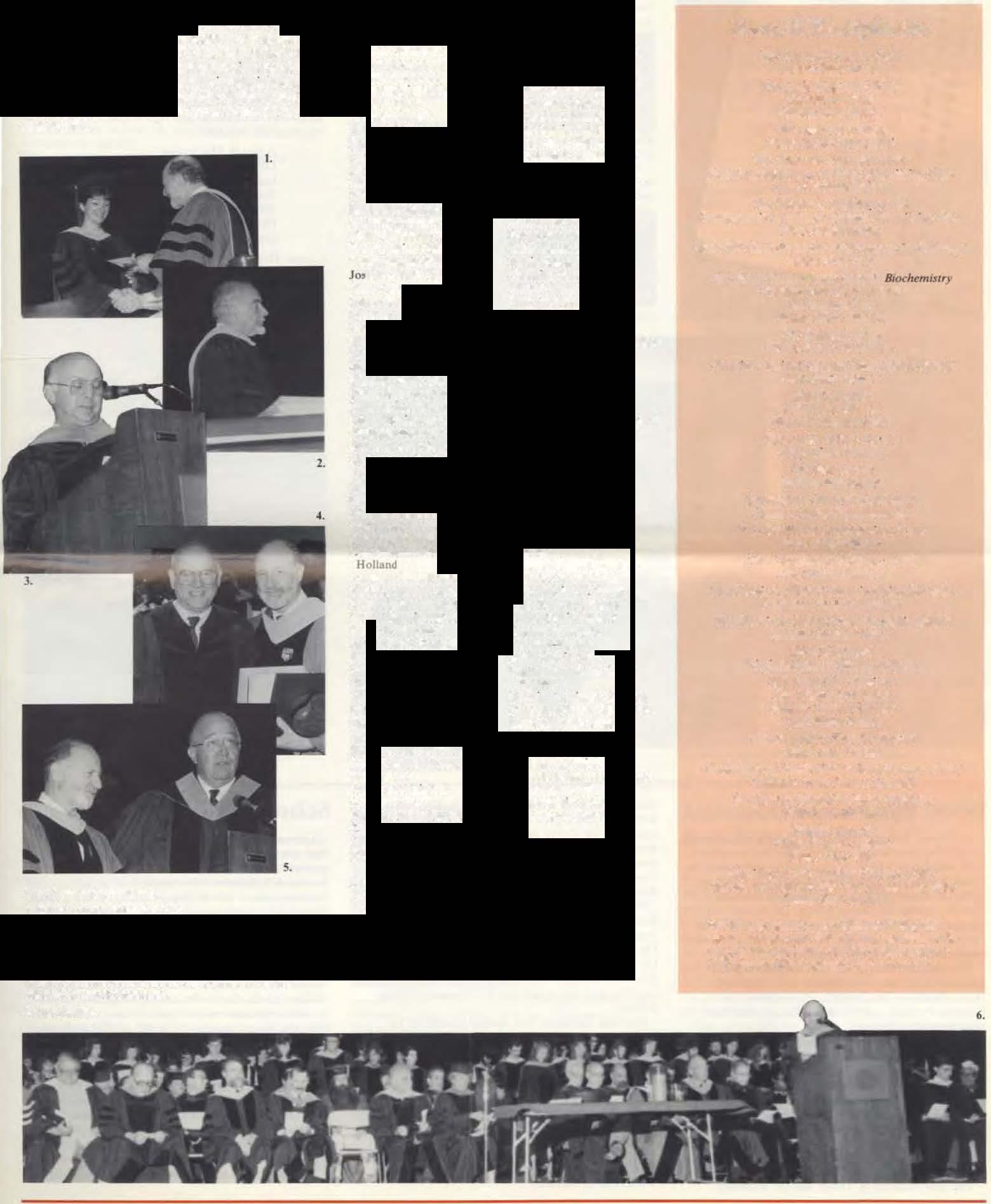
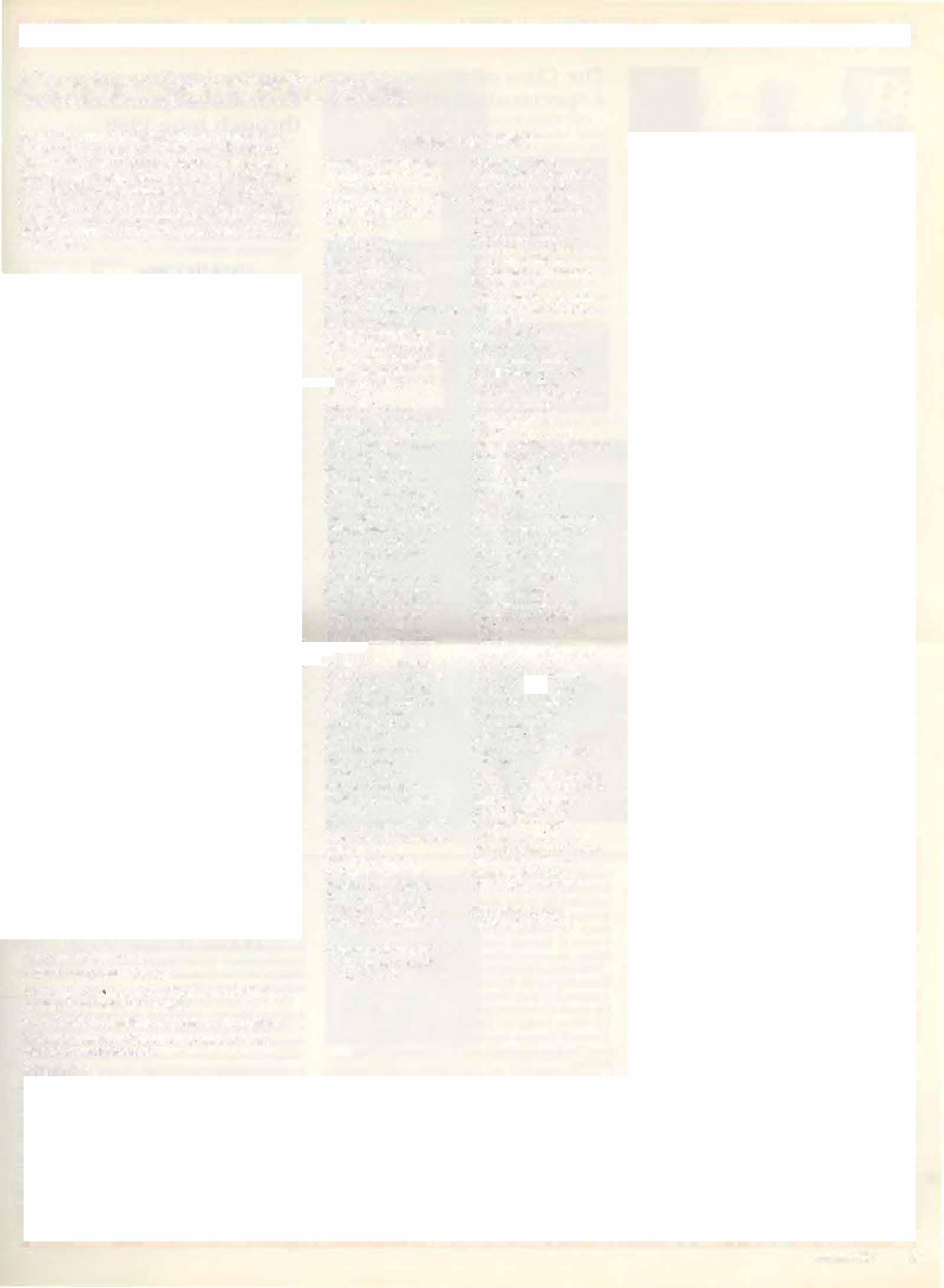
SharonleeToil
171t'James Ha=fitt Jones PTIU in PatricialynnBermingham
ShaTonLeeToll
�ichaeJErieTn:itlcr
The Afilmurk Prizr
ClydeStrockMcMillen
Amencan Ammo/ HospitalAssociation Award
JoanMarieYarnall
.\ferck Awards
JohnRos)Kinney
RkhardHowardFried
George\{. Palmer A�'<ord
r\bb}DtehlMa:�son
Phileta Aword
RobenSethKievaJ
Ew.>ringham Pri::efor Omlifllugy CharlesBartonSpainhour,Jr.
E. L Stuhbs A1•ian Mt>dicmt• A11·ord
GaryMartinTabnr
Tf,� IArl!;<'AtrimulSurg<'r,l Prl:t:
Abby DiehlM.txl>on
111r\fnrrtsLZukinJPrt:e m Swmt• Mcdid11r
FranciscoJa,•ier\'ela7quez
l11e \IMruL. Zi.skind Pn::rin Puhlte Health
SusanneRachadFc:lser
EVSCOAward
YtrglniaPennock.Trexler-Myren
lli/1Award/or Nutruicm
BethYearlingDronson
VirginiaTheresaRentlw
LynnMarieDanesi
HillAv.ardjor Hu.1pital Des1gn
JackLancelipken
Conferena' ofPub/Jc Health Jetrrmartans Awurcl
CathleenAlmaHanlonLanuni
nu· Purina Aworclfor Swint> Mecltciue
JohnRossKinney
Upjohn Award.\
JamesBruceLawhead
Sharon LeeToll
Au:u/iory to theStudenl Chapinofthe
Amaro11 Veterinary Medical Auuciatwn Pri:e
RobenSethK.ic:val
Onefacull}memberwashonoredduringtbe commencemenLDr.Ellenl.Ziemer,le�:turerin largeanimalmedicine,wastherecipientofthe 1987NordenDistinguishedTeacherAward.
I. Adiplomaispresented 2. Or.MorrisL.Ziskind(V16). 3. Dr.RogerG. mith,Jr.,(V'57),presidentofPVMA. admin�1ersTheVetuiruuian'sOatb. 4. Or.BaruchS.Blumberg,thecommencement�peaku. 5. DelUl�brsha.kandCharlesWolf,chairmanorIhe School\BoardorOverseers. 6. Thefaculty.A "ThankYou and Best Wishes"partywas held on June23forinternsand residents who hadcompleted their training atVHUP. Missed will be the interns Dr. Frank Kearse, Dr. ClareMainwaring, Dr. Cynlhia Otto, Dr. Kimberly Robertson, andDr.Richard Sielicki. lnterns Dr.JamesJeffers. Dr. A.Jon Nannos, and Dr. Errol Tregerwillbeginresidencies; Dr.Jeffers in dermatology, Dr. Nannosinorthopedic surgery.and Dr. Tregerin medicine.
The residentsleavingare Drs. Clayton K.ilrain, Barbara Chapman, JeanCloran,and Lorrainede Jager. Residents Or. David L. Diefenderfer,Dr. Caroline Prymak, and Dr. Betsy Dayrell-Harthave been appointed lecturers.
The new internsand residents began their duties on July I.The interns are: Dr. Kevin Concannon, University ofMissouri;Dr.Susan DeVries, Michigan State University; Dr. Elisa Dowd, Universityof California, Davis; Dr.RichardFried(V'87); Dr. Terrance Hamilton, University ofillinois; Or. Steven Heyman(V'87); Dr. Robert O'Brien, OhioState University; Dr. Erik Peterson, UniversityofTennessee; Dr. Virginia Rentko (V'87); Dr. Marc Vingerhoets. Universityof Bern, Switzerland.
ThenewresidentsatVHUPareDr. Elizabeth
BeiJwether
THENEED: Renovation ofseveral rooms inthe SmallAnimal Hospitaltoprovideahospitalitysuite and overnight accommodations forvisitingfaculty andguestsanda showcaseforantiqueveterinary booksandinstruments.
THE RESPONSE:$23,000raised bythe members oftheClassof1937.
THE RESULT:THE CLASS OF 1937 ALUMNI ROOM.
Twofurnished bedrooms, akitchen and shared bath allowingvisitingfacultyan attractiveapartment, plus conferencefhospitaUtysuite.
A hand-madedisplaycabinet has been specially designed toprovidespaceforarotatingexhibitof antiqueveterinarybooksand instruments.
Thedean.faculty,andstudentsgratefullyacknowledgethesupport ofthemembersoftheClassof 1937, whosegenerosity madelheroompossible, Specialthanks toDr.HarryF. B. Bartolett, Dr. David Crisman,and Dr. Sydney Rosenbergfororganizingthiseffort.

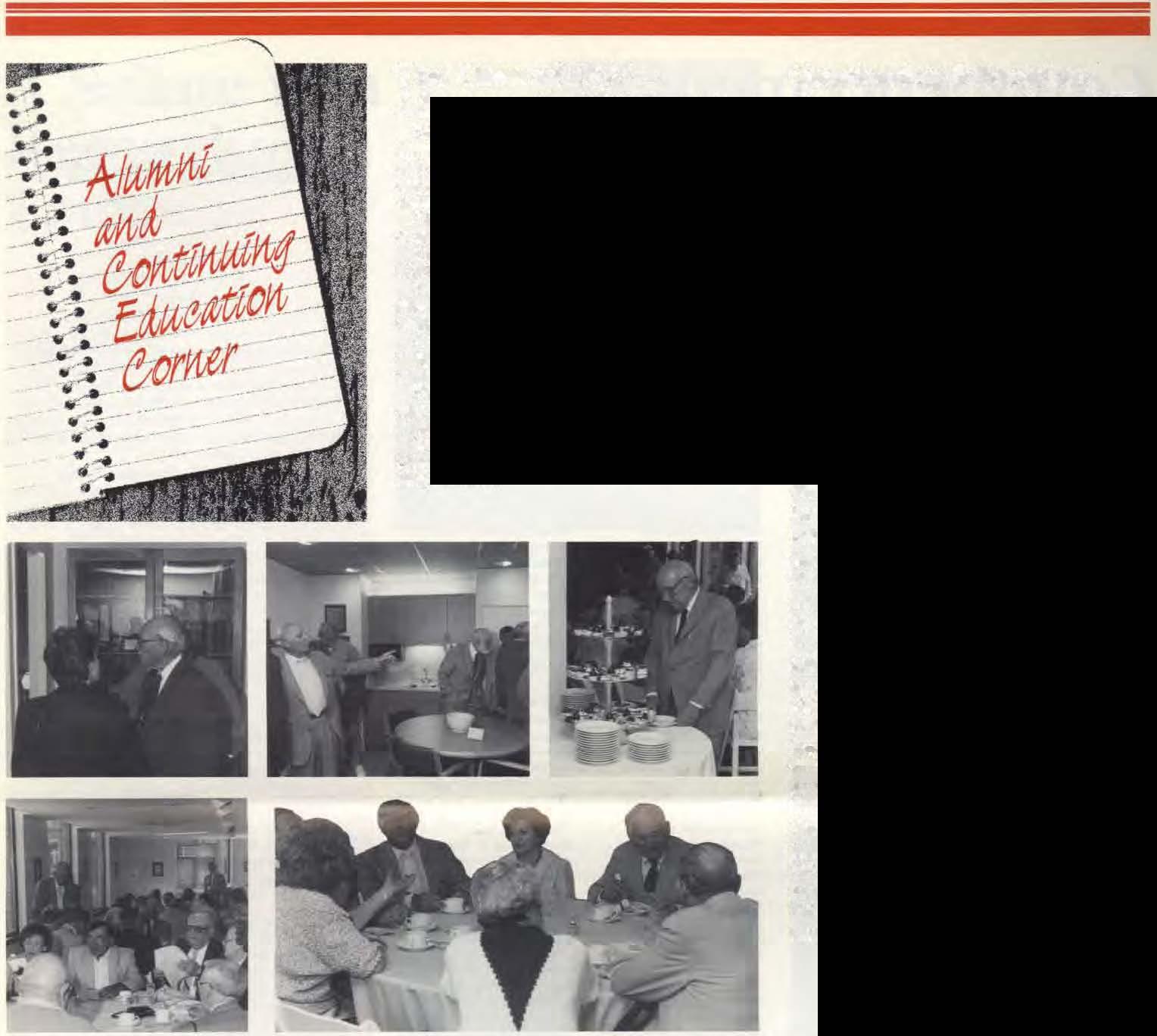
Dr. Charles Newton and Dr. Thomas Dinrs Program Chairmen
ThefocusfortheSchool's 1987-1988 Continuing Education Programfor graduateveterinariansis "hands-on"experience. Manyofthecoursesare limitedtoensureanexcellent learning experience. For additionalinformationand registrationon the foUowing program.contact:
Asbra P. MarkowitzOfficeofContinuing Education
UniversityofPennsylvania
School ofVeterinary Medici11e
3800 SpruceStreet
Philadelphia, PA 19104-6008
(215) 898-1882
Course Title
Systemic and Hematologic ImmuneMediated Disorders in Dogs
LasersinVeterinary Medtcine and Surgery
Update: BovineLeukosis
Western Pennsy ani opics in Onhopaedics
SurgicalSoftTissueLaboratory
Non-Plating Orthopaedics
Small Anjmal Echocardiographyand
Date
Sept. 30, 1987
Oct.27, 1987
Oct. 28, 1987
Nov. 18, 1987
Dec.3, 1987
Jan.20, 1988
Abdominal Ultrasound(lectureonly) Jan. 28, 1988
Small Animal Echocardiographyand Abdominal Ultrasound (lecture and laboratory) Jan. 28&29, 1988
Surgical Approaches to the Bones and Joints of Dogs(laboratory) Feb. 17. 1988
Surgical Drainage and"BiopsyLaboratory, lndicatiolb andTechnique:;
Dermatology
Small AnimalRadiology Laboratory, Part 1-ChestandAbdomen
Small Animal Radiology Laboratory, Pan n-Skeletal Reconstructive Stifle Surgery Laboratory
Mac.2, 1'>88
May 18, 1988
May 25, 1988
June 1, 1988
June8, 1988
Farrar, Dr. Leslie King,medicine:Dr. Karin Sorenmo, oncology; Dr. KennethDrobatz.,emergency medicine; Dr David Holt,softtissuesurgery;Dr. Barbara Hotz, radiology;Dr. Michael Tomasic, anesthesia; Dr. Cecelia A. Helenski, cardiology; Dr. Vincent C. Biourge,small animal nutrition; Dr.Joel Rubin,laboratoryanimalmedicine.
Theinterns leavingNew Bolton CenterwereDr. ReneeBayba,Dr. Patrick McCue, Dr. Jenny Johnson, Dr. Kate Gropp,and Dr. WilliamAsbury. Dr. Sandra Ehnencompleted herresidency. Totems Dr. David Young, Dr. Dan Dreyfuss, and Dr. Elizabeth Hausnerbegantheirresidencies;Drs. Young and Dreyfussinsurgery,and Dr. HausnerinField Service.
Thenewinterns at NewBoltonCenterare Dr. PatriciaBrooks, ColoradoSlate University;Dr. Virginia Kauffman, Maryland-VirginiaCollegeof Veterinary Medicine;Dr. Joseph Mankowski, Cornell University;Dr. Abby Maxson(V'87); Dr. Alan Ruggles.Cornell University; Dr. GregoryStaller, UniversityofCalifornia, Davis;Dr. Rachel Blakey(V'87), and Dr. Fernando Riera.
Tbenewresidentsare: Dr.Sarah Gardnerand Dr. Yves Rossier in medicine; Dr. Wendy Freeman in Field Service; Dr. LindaBakerand Dr. Susan Whitehead innutrition.
Donna Marina Dambach. Kris Haight, and Mary Kirk arethe recipientsofa$1,000scholarshipeach. provided by the Lancaster Kennel Club, Inc. Frederick P. Schuler isthe recipient ofthe Mrs. Bianca Leonard Scholarship provided byMs. Sharon Rhinelander, McDonough, NY. Linda Molesworth received the Amlan Scholarship.
TheNewYorJc Farmershave made a $5.000contributiontoTheNew YorkFarmers Scholarship Fund attheSchool. The Board ofthe PrincetonSmall Animal RescueLeaguehasunderwritten aJanet CottierScholarshipintheamountof$5,500peryear toassist in theeducationofoneofthestudents fora four-yearperiodstartinginthefall of1987and running through the end oftheacademicyear, 1991.
The ReidlerFoundationofHarletonhas madea $1,000contributiontothescholarshipfund.Dr. Lisa Bopen(V'84)contributed $1,000forlheDavid L and Victoria R. Greenberg Memorial Scholarship Fund. TherecipientsofthefundsareJand Crawford and Andrea Lerner.
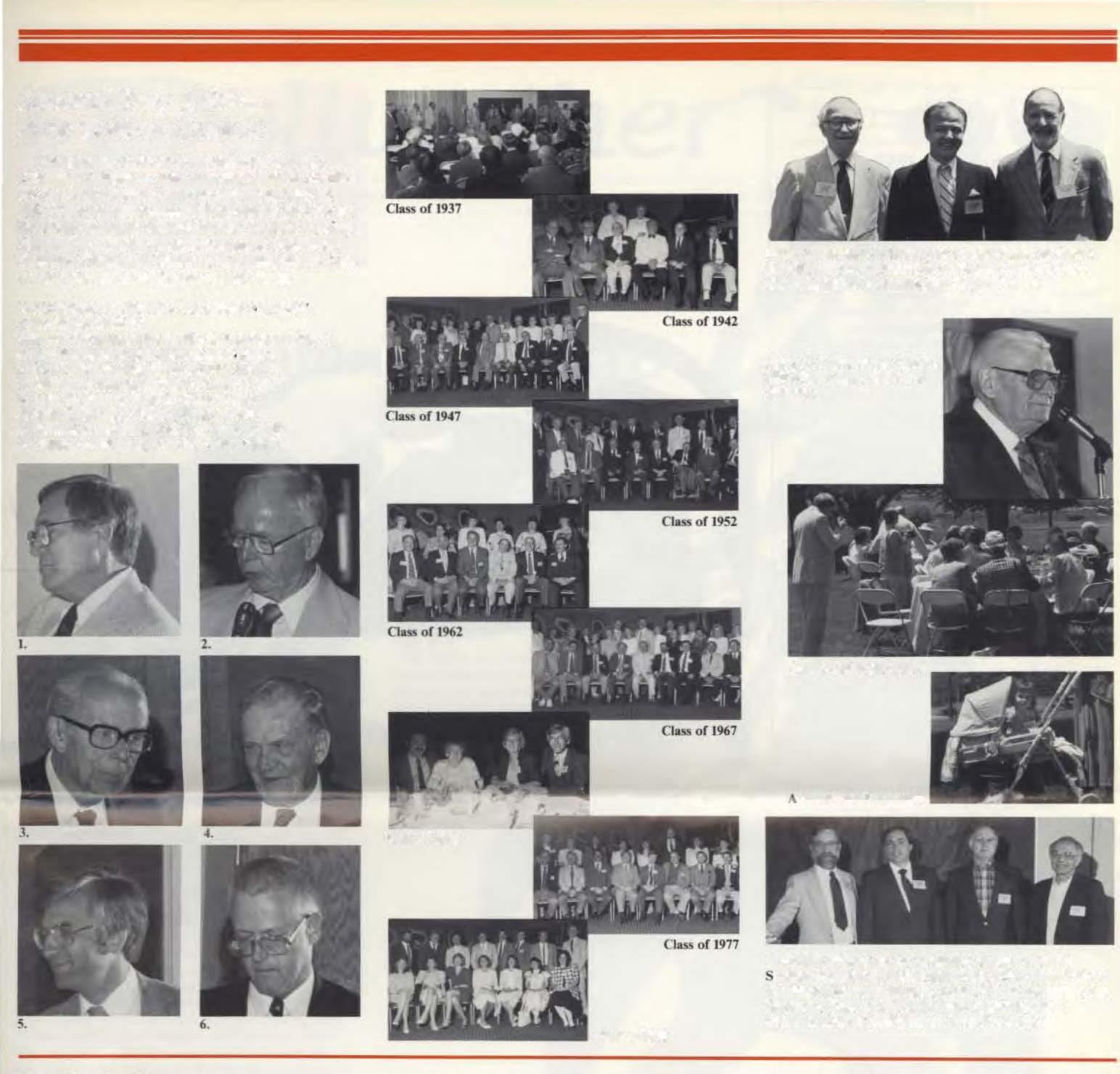
Alumnifromasfar as Californiaand Bogota, Colombia.enjoyed awarmandsun-filled ALUMNI DAY atNew BoltonCenteronSaturday.May 16. 1987.Threehundred guestsftlled Alumni Hall forthe Veterinary Medical AlumniSociety Annual "feetmg foHowed byabuffet lunch and tours ofLongwood Gardem, WinterthurMuseum.and New Bolton Center.One picture is worthathousand words :
AWARD OF MERIT
ThisawardispresentedannuallyduringAlumniDayCo honordistinguishedgradWltesorthe chool.
1. Lo}C.Awkerman,V.M.D.,Classof1952
2. William B.Boucher,V.M.D.,Classof1940
3. John H.Brown,V.M.D.• Classof1932
4. JohnE.Martin,V.M.D..Classof1942
5. MichaelA.Obenski,V.M.D.,Classof1972
6. VernonR.YingJjng,V.M.D.,Classof1957
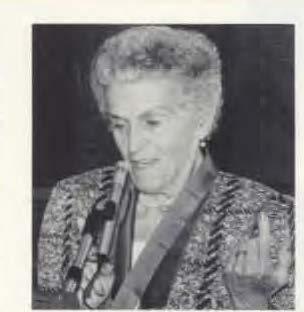
MarieA. MoorediedonJune 10, 1987. at her home inThe Plains, Virginia. Mrs. Moore hasendowedthe \rtarieA. Moore Chair in Humane Etlllcsand Animal Welfarehere at theSchoolofVeterinary Medicine. Thisprofessorship.theftrstofitskind inthenation, whenfilled. willconferanessentialmeasureofrccogrution and prestigeon humaneethics and animal welfareasalegitimatefield ofscholarship.

Mrs. Mooredevoted muchofherlifetothewelfare ofanimals. For manyyearsshe investigated casesof animaJ abusefortheVirginiaFederationofHumane Societies. Recognizingthedireneed foran animal shelterin FauquierCounry, VA,sheestablishedone onherfarm inThe Plains.Shealmost�inglehandedly ranttfor Uyearsand tookin andcaredfor22,870 dogs, largenumbersofhomelesscats. horses.occasionalcows,and wildlife.Theshelterclosed in 1970 whenthe HumaneSocietvofthe UnitedStates establisheda-bettertn herarea.
Forher animal welfarework,MarieA. Moorewas honored b>theWashingtonAnimal RescueLeague. whichpresented herwiththeAward of Merit. She served on the President'sCouncilofthe Humane Societyofthe UnitedStatesand was anhonorary
memberofthe Fairfax County HumaneSociety,the HumaneSocietyofNewYork, and the American Horse Protective Society.

Formanyyears Mrs. Moore bred and racedThoroughbredshereand inEngland. Shedevotedagreat deal ofefforttothe Mastiffbreed atatimewhen the breedwasbeingreestablished afterdevastatinglosses ofbreedingstockduring WWU. Herbook, The Mastiff. waspublishedin 1978�it providesan overVIew ofthehistoryanddevelopment ofthe breed.
Mrs. Moore was an AKClicensedjudge, and her manyassignmentstook her all over Northand South America. England,and South Africa.
AU area practitionersareinvited to attend the School's Annual Interns and Residents Picnicatthe P�iladelphiaZooonWednesday,September9, 1987, at6 p.m.
Thisis auniqueopponunitytoreacquaintyourself withyourcolleaguesandto meet your nev.colleagues whohaverecentlyjoined thestaffat Penn.Thepicnic will be held onthelawnbythe Impala House(in the reptilehouseincaseofinclementweather), and hamburgers. hotdogs,barbecued chicken,spareribs, and allthetrimmingswillbeavailable.
Thecost is$10perperson. Pleasemakeyourcheck payable to KeystoneVMA andsend to.
JamesE. Simpson,Jr.,V.M.D. 4331 Main Street Philadelphia, PA 19127
Anyquestionsshould bedirectedtoAshra Markowitzat the VeterinarySchoolat215 898-4234.
5.Bellwether is publishedbythe Schoolof Veterinary Medicine at the University ofPennsylvania, in cooperation with the University of Pennsylvania, Office of University Relations.
Editor: Helma Weeks
AssistanlEditor: John E. Martin, V.M.D.
Writers:
Helma Weeks
Dr. M. Josephine Deubler (Ammo/ Crackers)
Illustrator: Marie Garofano
Photographers: Adam Gordon Lynne R. Klunder New Bolton Liaison: Catherine Larmore
We'd like to hearyourpraise, criticisms. or comments. Please addressyour correspondence to:
Helma Weeks, University ofPennsylvania. Schoolof Veterinary Medicne, 1800 Spruce Street. Philadelphia, PA 19104..0010 (215)-898-1475
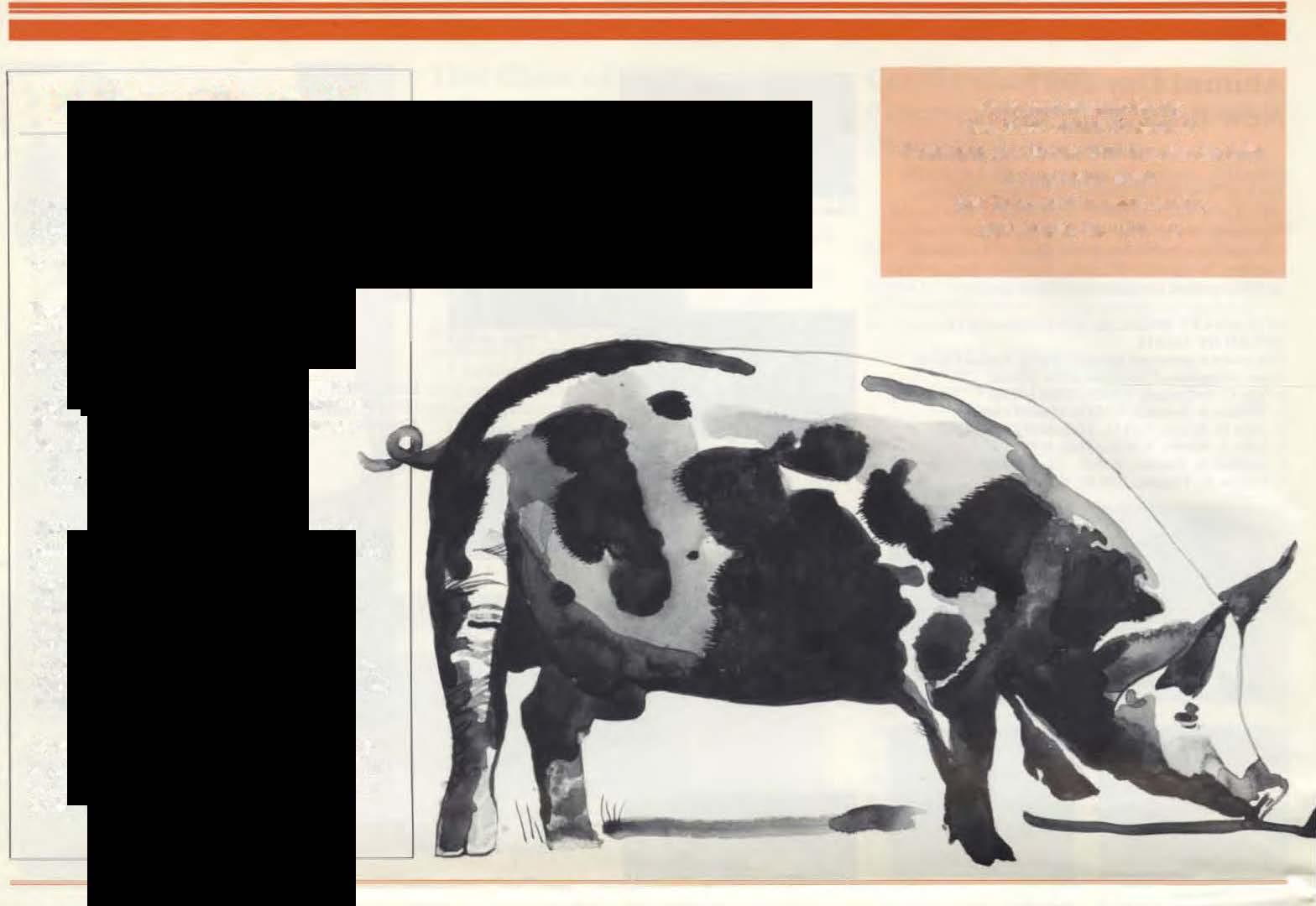
or Linda Fischer, University ofPennsylvania, Office ofUniversity Relations, 410 Logan Hall, Philadelphia, PA 19104-6387
None ofthese articlesore to be reproducedin anyform without thepermission ofthe editors ofBellwether. 1987 Copyright by the Trustees ofthe University ofPennsylvania.

University of Pennsylvania
School of Veterinary Medicine
3800 Spruce Street
Philadelphi� PA 19104-6008
Mark your calendarfor the 1988 Peon Annual Conference
Wednesday,Jan. 27, and Thursday. Jan. 28. 1988
Adams Mark Hot� City Lineand Monument Avenue Philadelphia, Pennsylvania
Nonprofit Organization US Postage PAID
Philadelphia, PA Permit No 2563